- ONA24 Conference
- Online Journalism Awards
- Member Log In
Please enable javascript to view this site.
- Rules and Eligibility
- Entry Requirements
- Tips for Submitting
- OJA Categories
- Community Award
- Foley Award
- Founder Award
- Impact Award
- Previous Award Categories
- Previous Years
- Hide Navigation

Organization Longreads
Award General Excellence in Online Journalism, Small Newsroom
Program 2018
Entry Links Link 1 | Archive Link 2 | Archive Link 3 | Archive

Judges comments
Quote_here.
About the Project
Longreads began as a Twitter hashtag, expanded into a site that curated the best long-form storytelling in the world, and has grown into a digital publication that produces in-depth investigative pieces, commentary, book reviews, audio stories, and personal essays.
Some examples of our work in the last year and our approach:
Bundyville: Reporter Leah Sottile spent two years reporting about the Bundy family who organized two armed standoffs against the federal government and beat them twice in court. The result was a 30,000-word four-part series and seven-episode podcast produced in partnership with Oregon Public Broadcasting that examines issues of power and privilege, land and water rights in the American West, and how fringe beliefs help domestic terrorism and extremism materialize. The podcast was downloaded more than 100,000 times in it’s first week and reviewed positively by outlets like The Guardian and The Ringer.
The Strike: When workers at a chemical company had their health care benefits reduced just as many of them began to develop different forms of cancer, they decided to go on strike. Ian Frisch spent a year with the workers to tell a story about labor and health care in the U.S.
Scott Korb’s Empathy Course: To explore the issue of empathy in writing, we worked with Scott Korb, who teaches in Pacific University’s MFA in Writing program, to put together an online course readers could follow to experience critical thinking on empathy in a larger way than they would simply by reading an essay.
Laurie Penny’s Columns: Laurie Penny’s National Magazine Award-nominated columns explores important issues of consent, female desire, and harassment in the #metoo era. They’ve generated an extraordinary amount of conversations on Facebook and Twitter.
How to Write a Memoir While Grieving: Longreads is committed to diversity and inclusion and sharing as many different voices and stories as we can. We’re able to accomplish this the most by publishing weekly personal essays, and this essay by Nicole Chung on adoption and grief is a good example of this kind of work.
Longreads has also hosted and participated in live storytelling events in bookstores across the U.S. and collaborated with a number of different outlets to produce outstanding journalism. We have a large community on Twitter that uses the #longreads hashtag to share outstanding works of long-form journalism, and we curate and share the best of these stories from other publishers each week in our popular newsletter as a way to celebrate the work our industry is producing.
Other 2018 Finalists in This Category
- The Texas Tribune , The Texas Tribune
- The Marshall Project , The Marshall Project
Winners in this category in other years
- Honolulu Civil Beat , Honolulu Civil Beat
- The Trace , The Trace
- Grist , Grist
Winners in the 2018 Awards
- Yemen’s Skies of Terror , Al Jazeera Contrast
- Trint , Trint
- The Last Generation , FRONTLINE
- Nicole Tung
- Apply to be a 2024 OJA Screener or Judge
- Frequently Asked Questions
- Finalists’ Organizations
- Promotion Guidelines
- Category Change Log
- Dissent Process
- 2022 Winners
- 2021 Winners
- 2020 Winners
- 2019 Winners
- 2018 Winners
- All Categories
About the OJAs
The Online Journalism Awards™ (OJAs), launched in May 2000, are the only comprehensive set of journalism prizes honoring excellence in digital journalism around the world.
- Craft and Criticism
- Fiction and Poetry
- News and Culture
- Lit Hub Radio
- Reading Lists

- Literary Criticism
- Craft and Advice
- In Conversation
- On Translation
- Short Story
- From the Novel
- Bookstores and Libraries
- Film and TV
- Art and Photography
- Freeman’s
- The Virtual Book Channel
- Behind the Mic
- Beyond the Page
- The Cosmic Library
- The Critic and Her Publics
- Emergence Magazine
- Fiction/Non/Fiction
- First Draft: A Dialogue on Writing
- Future Fables
- The History of Literature
- I’m a Writer But
- Just the Right Book
- Lit Century
- The Literary Life with Mitchell Kaplan
- New Books Network
- Tor Presents: Voyage Into Genre
- Windham-Campbell Prizes Podcast
- Write-minded
- The Best of the Decade
- Best Reviewed Books
- BookMarks Daily Giveaway
- The Daily Thrill
- CrimeReads Daily Giveaway

What Does “Longform” Journalism Really Mean?
On love and ruin , terminology, and the anxiety of limits.
Writers are preoccupied with limits: temporal and physical and metaphysical, the divisions between self and other, the mind’s inability to reconstruct the subject of its fascination. Borges envisioned “a Map of the Empire that was of the same Scale as the Empire and that coincided with it point for point.” Moby-Dick ’s Ishmael claimed that “true places” resisted the attempts of mapmakers. Stories often assume the shape of their limitations. In 2006, the same year that Twitter launched, Robert Olen Butler published Severance , a story collection that employed what one reviewer called “a new—and unlikely to be replicated—art form, the vignette of the severed head told in exactly 240 words.”
For journalists, tasked with something like verisimilitude, these limits are always existential. Joe Gould claimed to be writing an oral history whose purview was the knowable world. Joseph Mitchell, who first profiled Gould for The New Yorker in 1942, came to doubt the history’s existence, and said as much after Gould’s death. Gould’s history was never published. Another New Yorker staff writer, Jill Lepore, suspects Gould’s compulsive writing was hypergraphia. “This is an illness, a mania,” she wrote, “but seems more like something a writer might envy.” Perhaps Mitchell did; after his final piece on Gould, Mitchell never published another word. Like Gould’s productivity, Mitchell’s silence was storied but impossible to verify. Lepore wrote about both men in “Joe Gould’s Teeth,” a feature article whose word count grew into a book-length manuscript.
“Writers tumble into this story,” wrote Lepore, “and then they plummet.” The boundaries of the observable world push inward and outward; we are fathomless, the universe immeasurable. Where, then, should a story begin and end?
In the past decade, as declining ad revenue constricted editorial space in print publications, online publishing offered journalists freedom from some of their limits. A story could be as complicated as its subject required, and as long as necessary, though the ancient caveat still applied: your readers might not stick with you until the end. Websites such as BuzzFeed, whose content seemed to assume a newly attention-deficient readership, occasionally published pieces of narrative nonfiction whose word counts reached into the thousands. Online publishers began to label such stories “longform.”
Journalists and their readers have an uneasy history with such labels. “I have no idea who coined the term ‘the New Journalism’ or when it was coined,” wrote Tom Wolfe in a 1972 feature article in New York . “I have never even liked the term.” Neither did Hunter S. Thompson, who wrote to Wolfe and threatened to “have your goddamn femurs ground into bone splinters if you ever mention my name again in connection with that horrible ‘new journalism’ shuck you’re promoting.” (Wolfe still included Thompson in his 1973 anthology, The New Journalism .) “Creative nonfiction” still enjoys wide usage, and a magazine exists by the same name. Its editor, Lee Gutkind, writes that Creative Nonfiction “defines the genre simply, succinctly, and accurately as ‘true stories well told.’” These labels amount to a shaggy taxonomy; journalists that share certain aesthetics are grouped together, and then those groups are differentiated from each other, to the presumed benefit of readers.
Such labels sometimes reward the writer, who becomes associated with a popular movement. They sometimes reward the reader, who has a new word for what she seeks. Most often, they reward the publisher. But a publisher’s loyalties can shift with the market. Medium, a publishing platform that developed an early reputation for longform journalism, distanced itself from the label. (“It was not our intention… to create a platform just for ‘long-form’ content,” said Ev Williams, Medium CEO and a co-founder of Twitter.) BuzzFeed, on the other hand, hired a “longform editor” in 2013 to oversee a section of the site devoted to such stories. The longform editor described his section as “BuzzFeed for people who are afraid of BuzzFeed.”
Whether labels like “longform” reward a story is another matter. “Length is hardly the quality that most meaningfully classifies these stories,” wrote James Bennet in The Atlantic . “Yet there’s a real conundrum here: If ‘long-form’ doesn’t fit, what term is elastic enough to encompass the varied journalism it has come to represent, from narrative to essay, profile to criticism?” The term “journalism” is, somehow, insufficient.
Taxonomy presents one conundrum; popularity makes for another. The “longform” label offers readers and writers a new way to self-identify, and a new hashtag by which they may find, distinguish and promote stories. An attendant risk is that a story’s appeal as a “longform” product could short-circuit editorial judgment and damage a writer or his subject before a large audience.
In 2014, Grantland published “ Dr. V’s Magical Putter ,” a 7,000-word profile of an inventor and transgender woman whose gender transition was revealed in the story—before she had revealed it to people in her life. “What began as a story about a brilliant woman with a new invention,” author Chris Hannan wrote, “had turned into the tale of a troubled man who had invented a new life for himself.” Hannan reveals in his final paragraphs that his subject committed suicide, and wrote, “Writing a eulogy for a person who by all accounts despised you is an odd experience.” In the New York Times , Jonathan Mahler cautioned readers and writers again “fetishizing the form and losing sight of its function.”
“Longform” springs from journalism’s anxiety over limitations—mainly, its online audience’s attention span. During the longform decade, software developers created programs that translate word counts into estimated reading times. Both Longreads.com and Longform.org use the program, as does Medium. For their first assignment, students of the late New York Times media critic David Carr wrote stories with estimated reading times of fewer than five minutes.
In 2011, The Atavist Magazine began to publish longform stories—“one blockbuster nonfiction story a month, generally between 5,000 and 30,000 words.” Since its inception, The Atavist ’s stories have been nominated for eight National Magazine Awards; the magazine’s first win, for 2015’s “Love and Ruin,” was also the first time the coveted “feature writing” award went to a digital magazine. While the magazine’s founder, Evan Ratliff, employs the “longform” label to describe The Atavist ’s work, he doesn’t fret about his audience’s attention span.
“The people who are making decisions based on that, I don’t think they’re doing it based on actual research, either,” he told Columbia Journalism Review a few months after The Atavist Magazine published its first story. “I think they’re all doing it based on anecdotal experience.” Ratliff concluded, “I don’t really care if attention spans are going down in the world overall or not.” And the universe—the unknowable curator of all the components of our stories—doesn’t care either.
Love and Ruin is a new anthology of stories culled from The Atavist ’s first five years. If labels like “longform” mean anything, then Love and Ruin is also the first collection of stories that typify a new genre, a successor to titles like Wolfe’s The New Journalism and Robert Boynton’s The New New Journalism .
“‘Longform’ written storytelling . . . was, it was said, going the way of the black rhino,” Ratliff writes in his foreword. “Our magazine is built on questioning that wisdom.” Still, Ratliff doesn’t dwell on the word; if length can be considered a characteristic of each story in Love and Ruin , then it’s the one that interests him least.
Each story in Love and Ruin first appeared online, via the magazine’s proprietary platform, along with interview excerpts, original photography, embedded videos, and optional audiobook downloads. Most also came with an estimated reading time. The shortest story in Love and Ruin —Brooke Jarvis’ 10,000-word account of the year she spent working with leprosy patients in Kalaupapa, Hawaii, as the community and its last inhabitants dwindled—is classified online as a “44 minute read.” The longest stories clear 20,000 words, which means a time commitment equivalent to watching a feature film.
The ten stories in Love and Ruin fall comfortably within the word counts that The Atavist sets for its nonfiction, a range that contemporary readers expect from “longform.” But word counts and reading times are poor distinguishing features for a genre, a lackluster explanation for why these stories should appear together, and a useless tool for evaluating the rewards of the book.
The stories in Love and Ruin don’t share many sensibilities. Ratliff writes in his foreword that there is no “house style”—a suggestion that each Atavist story is told in something closer to each writer’s authentic voice. In her introduction, New Yorker staff writer Susan Orlean takes on journalism’s taxonomy problem, sets aside a few genre labels (“new journalism,” “creative nonfiction,” “longform”), and then classifies the stories in Love and Ruin as “magpie journalism.” It’s a laudatory phrase, but at a second glance it doesn’t distinguish the stories in Love and Ruin from plenty of others.
If the stories in Love and Ruin are bound by something other than glue, then it’s a sort of thematic unity, born from the same anxieties that gave us “longform.” Each story in Love and Ruin depicts its author’s struggle with the limits of investigation, representation, or understanding. “The Fort of Young Saplings” follows Vanessa Veselka’s tangential connection to a native Alaskan tribe back to the moment when that tribe’s history was overwritten. Jarvis’ story, “When We Are Called to Part,” approaches the same critical moment, when a community becomes a collection of stories, told selectively and bracketed by time. In “Mother, Stranger,” Cris Beam navigates the fog of her abusive mother’s mental illness and her own traumatic upbringing. “I didn’t have a language for my mother,” writes Beam, “probably because she didn’t have a cohesive language for herself.” The black boxes in Love and Ruin are figurative and sometimes literal; Adam Higginbotham’s “1,000 Pounds of Dynamite,” an anatomy of a failed extortion plot, features both.
Underpinned by limits and all their attendant complications, the narratives that arise from Love and Ruin are fundamentally strange and unwieldy, and as long as they need to be. Leslie Jamison’s “52 Blue” provides Love and Ruin with its most luminous prose. But the story—about a solitary whale that sings at a unique and isolating frequency, and the people drawn to the whale’s story—also offers the anthology’s best consideration of the boundaries that shape stories and their telling.
“52 Blue suggests not just one single whale as a metaphor for loneliness, but metaphor itself as a salve for loneliness,” Jamison writes. “What if we grant the whale his whaleness, grant him furlough from our metaphoric employ, but still grant the contours of his second self—the one we’ve made—and admit what he’s done for us?”
Jamison does not reach her best ideas in few words. But without the words she uses, those ideas may not be otherwise reachable. A story’s word count can sometimes be a proxy for complexity; that’s the appeal of a label like “longform” for the readers that claim to love it. But complicated stories also refute “longform.” They leave their readers with a feeling that the story and its shape are an inevitable match. How else could it have been told?
Here, then, is The Atavist ’s chief achievement with Love and Ruin : In collecting its finest “longform” nonfiction, The Atavist created an anthology that undermines its own flimsy label—and, hopefully, refutes some of our anxiety about time and attention, and the other limits that govern our lives.
The anxiety of limitation—the dread of meaning lost, to time and to space—is recurrent. “Before there were even screens in our living rooms, the same worries reared their heads,” writes Nick Bilton in I Live in the Future, and Here’s How it Works . “There was a time in the 1920s when cultural critics feared Americans were losing their ability to swallow a long, thoughtful novel or even a detailed magazine piece. The evil culprit: Reader’s Digest .”
But the condensed and excerpted stories in Reader’s Digest didn’t bring about the end of attention, or of complicated storytelling. “Reader’s weren’t abandoning long stories for short ones,” writes Bilton. “The appeal of Reader’s Digest was in the overall experience.”
In 2001, David Foster Wallace—who died in the early years of the “longform” decade and whose nonfiction posthumously bears that label—reviewed a collection of prose poems. “These putatively ‘transgressive’ forms depend heavily on received ideas of genre, category, and formal conventions,” wrote Wallace, “since without such an established context there’s nothing much to transgress against.” Do away with some of those conventions and received ideas, and a genre seems more accommodating. Labels like “longform” and “prose poem” are unnecessary limitations; they may evoke a certain shape, but they also constrain it.
A few years ago, for his introduction to The Best American Magazine Writing , James Bennet wrote a short essay that later appeared online at The Atlantic , under the headline “Against ‘Long-Form Journalism.’” Bennet argues that the label is insubstantial and misleading, and then suggests “another perfectly good, honorable name for this kind of work—the one on the cover of this anthology. You might just call it all magazine writing.” But that’s like distinguishing between “book fiction” and “movie fiction,” and besides, “magazine journalism” conflates a story with a product. A medium like print may help to shape a story, but that medium is always just a tool in the service of a narrative, and media change. There will come a time when Best American Magazine Writing needs a new title.
All the stories we tell are products of limits. Time shatters histories and then hides a few pieces. Writers construct narratives and, inevitably, omit some details. Addressing the same issue in photography, Errol Morris asked, “Isn’t there always a possible elephant lurking just at the edge of the frame?” Perhaps the elephant is unimportant to the story. And yet, there he is.
Here’s the trade-off: Narratives require that we surrender our conceptions of time and space, that we readjust our ideas of what can be known and what might be said. They can be fallible by design but still leave understanding in their wake. A story, of any length, moves readers through the world without fracturing meaning. The world fractures meaning on its own.
So perhaps we can unburden ourselves of labels like “longform.” The Atavist has already begun to do just that; in 2014, the site stopped translating word counts into estimated reading times. And perhaps we can task ourselves with something more: that we read and write closer to those circumstances that bracket our lives, and simply take the time and space we need.
- Share on Facebook (Opens in new window)
- Click to share on Twitter (Opens in new window)
- Click to share on Google+ (Opens in new window)
- Click to share on LinkedIn (Opens in new window)
- Click to share on Reddit (Opens in new window)
- Click to share on Tumblr (Opens in new window)
- Click to share on Pinterest (Opens in new window)
- Click to share on Pocket (Opens in new window)
Brendan Fitzgerald
Previous article, next article, support lit hub..

Join our community of readers.
to the Lithub Daily
Popular posts.

Follow us on Twitter
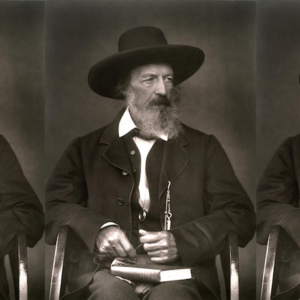
Best of the Week: November 14 - 18, 2016
- RSS - Posts
Literary Hub
Created by Grove Atlantic and Electric Literature
Sign Up For Our Newsletters
How to Pitch Lit Hub
Advertisers: Contact Us
Privacy Policy
Support Lit Hub - Become A Member
Longform digital journalism is on the rise.
Here’s why., here’s the paradox of the modern web: our devices and social networks have reduced our attention spans to that of newborn kittens; and yet, we crave longform content..
That sounds counter-intuitive, but there is strong evidence that the best performing pieces of content on the web are longreads. The latest data from Hubspot concluded that the highest ranking blog posts in search were on average 2,330 words, with some of the best performing — known as ‘pillar posts’ — stretching to 10,000 words.
Media companies have known this for a while. In 2014, Megan Garber published a piece in the Atlantic , highlighting that a 6,000 word piece from Buzzfeed received over one million page-views over the course of a month — with nearly half of those on mobile devices.
The new era in longform
Longform journalism is clearly making a comeback. Now, major news brands around the world are investing heavily in longform feature stories .
Take, for example, this story from Arab News on the life and assassination of Iranian military leader Qassem Soleimani. Using illustrations, video, maps, and archival photos, the Arab News team provides a rich and detailed account of Soleimani’s impact in the region.

Longform journalism is clearly making a comeback. Now, major news brands around the world are investing heavily in longform feature stories.
Image captions

Publish your first story free with Shorthand. Craft stunning, interactive web content — no code or web design skills required. Get started.
Other media companies — NBC, the BBC, Stuff, Sky News, Nature, Prodavinci, El Periodico, the NZ Herald, and more — are all producing stunning longform articles, narrative journalism, watchdog journalism , comics journalism , and digital features.
What is longform journalism?
There are seven features common to most great longform journalism:
1. It's long
Let's address the elephant (or is it giraffe?) in the room: Longform journalism is typically much longer than average. But there's much more to longform journalism than it's length. It is its own genre of content, with specific features and requirements that you need to keep in mind. Learn more in our guide to creating longform content .
2. It focuses on stories that need room to breathe
Not every story needs to be 10,000 words. Longform stories typically have multiple sections, with a narrative that gradually builds in intensity and significance. As the best journalists know, not all stories deserve that kind of attention. Sometimes there isn't any 'there' there, and it's best to keep a story piece short and to-the-point.
3. It respects the reader's attention
The best longform stories understand that the reader is giving them a rare gift: sustained attention. While the stories might be longer, careful editorial attention is paid to every word. There is never room for fluff or filler in great journalism, no matter if it's 700 words or 7,000.
4. It's a specific skill
We've said that not all stories need to go long, and the same is true of journalists. Longform writing is a specific skill. Not all journalists have the patience or desire to report out a longer story with multiple beats.
5. It's more expensive to produce
There's a reason why longform journalism is relatively rare: it's typically more expensive to produce. While not all journalists will take six months to produce a story — like those intrepid, patient reporters from The New Yorker in decades past — great longform stories do require more resources to report and write.
6. It's deeply reported
As a return for the resources invested in its production, longform journalism is typically deeply reported, meaning that it has multiple sources, which have each been explored in detail.
7. It's digital
As we'll discuss below, the best longform journalism is increasingly digital, interactive, and immersive. It typically includes a range of multimedia assets — including illustrations, photos, videos, animations, and data visualisations — and is a full-screen, distraction-free reading experience.
Longform business models
Why are news media increasingly producing longform content?
The work is clearly important. The deadly secret of China's invisible armada , a longform story from NBC News, broke news of illegal Chinese fishing vessels operating off the coast of North Korea. The story used satellite imagery and illustrated maps to show boat movements — which allegedly contributed to the death of North Korean fisherman and the creation of ‘widow’s villages.’

But this isn’t the only reason. With the rise of the internet, many media companies moved their content online, betting — or, at least, hoping — that digital advertising revenue would replace the decline in revenue from print.
At the same time, many news sites diverted resources to create a steady feed of clickable short form content — otherwise known as clickbait.
This content did its job. Headlines were clicked, traffic went up, and it seemed like the future of online news was going to look a little like this:

As a result, many media companies turned to a subscription or membership model. Sometimes, as with the New York Times , this led to a paywall. You can read more about how to implement a paywall here , as well as our list of the best paywall providers .
At other times, as with Stuff and The Guardian , companies leveraged their reputation for quality to ask for voluntary contributions. Many of these companies also invested in sponsored content, otherwise known as native advertising. You can see some excellent examples of native advertising in our guide.
The old business model depended on clicks, but the new business model depended on reputation.
And what’s the most reliable way to get a reputation for quality? Longform digital feature stories.
If your organisation is ready to build your own longform feature stories without writing a line of code, get started with Shorthand now .
No-code longform digital stories
This all makes sense — but in the early years, media companies looking to publish longform digital stories hit a snag. That snag was the prohibitive cost of developers.
As we’ve written elsewhere, one of the first longform digital stories — Snow Fall — was published by the New York Times . Initially, the industry celebrated the story as the future of journalism on the web.

That enthusiasm didn’t last long. It was soon revealed that the story had required a team of developers to work for months — that’s months, plural — to get everything working. No company, perhaps not even the Times , can scale that model of storytelling.
This is where digital storytelling platforms come in. With the rise of digital storytelling platforms, it’s become much easier to build beautiful, immersive, multimedia stories at scale. This is because developers and web designers are no longer an essential part of the process.
In this post, we’re going to introduce the five elements of high-performing longform digital stories. We’ll also look at some inspiring examples of longform digital storytelling from media companies from around the world, including the BBC, NBC, and Sky News.
We won't tell you how to write a longform story — you're the expert in that — but we can help you build a stunning digital story that performs brilliantly on the web.
Looking for more examples of great journalism? Check out our list of memorable environmental journalism .
Respect the attention of the reader

These days, it seems like most of the web is a concerted, algorithmically-driven attempt to distract the reader.
Many websites have multiple menu options, pop-ups, CTAs, banners, and a range of other elements — all designed to drag the reader's attention away from the primary content on the page and get them to perform another action.
There’s nothing inherently wrong with this sort of design. In context, many of these elements make perfect sense.
But they spell doom for longform feature stories. Longform stories — just like narrative television or novels — require the reader to make an initial effort to enter the world of the story. For most readers, this effort is only going to be made once. And as soon as you break the spell, they are unlikely to put the effort in again.
This means that you need to build your story with the reader's attention in mind. At Shorthand, we call this immersive storytelling — that is, storytelling that has been intentionally designed to keep the reader's attention.
Immersive stories are usually more successful in keeping the reader on page — and also more successful in getting the reader to click through to other content afterwards.
One example of an immersive digital story comes from the team at Sky Sports , marking 100 days of protest in sport after the murder of George Floyd.

Visualise your data
Many longform feature stories are informed by data. But, too often, this data is presented as a static chart, or otherwise excluded from the story.
There are sometimes good reasons for this. Data can be tricky to work with, and data journalists are still relatively thin on the ground. Data visualisation tools have also been historically expensive or prohibitively technical.
The good news is that this is changing. With digital storytelling platforms, you can easily embed third-party data visualisation tools, such as Tableau or Flourish.
In platforms like Shorthand, you can also create strong, interactive visualisations from static images — without writing a line of code. Learn more in our guide to data journalism, featuring Sky News and our guide to creating stunning data stories .
One example of this is Labour Day from media company Stuff.
If you're looking for more examples and inspiration, check out our guide, 8 examples of powerful data stories .

Find economies of scale
Longform stories often take the form of standalone projects, and usually take a village to produce, including journalists, editors, and creators of visual assets, such as photographers and designers.
For one-off projects, this can be expensive. In the current environment, media companies need to find efficiencies for longform projects to be feasible.
As we’ve mentioned above, there are good business reasons to publish longform stories. But even with these business reasons, costs still need to be managed.
The best way to do this is to identify economies of scale. Some of these economies will involve members of your team specialising — and getting more efficient — at specific parts of the story production process.
But the lowest hanging fruits are your technology choices. Building bespoke stories — like the Times with 'Snow Fall' — clearly doesn’t scale (for many media companies, it might not even scale to a single story).
This leaves you with a range of technology choices, from developer and design-heavy tools to no-code storytelling platforms. It also leaves you with a range of pricing options, from metered per-story payments to unlimited story publishing.
For media companies, we recommend unlimited story plans. This means that the cost per story decreases with every story you publish, and you never become a victim of your own success.
Do more with your visual assets
Most stories published on the web look and feel visually underwhelming — even when they have great visual assets at hand. This is because the legacy content management systems (CMS) used by most companies aren't built to utilise digital storytelling techniques.
With a digital storytelling platform, you can make much more effective use of your visual assets.
At its most simple, this involves including more images and illustrations than you otherwise would. With media galleries, a range of images can be used within the context of the story — without requiring the reader to necessarily focus on all of them.
With scroll-based animation, you can also create powerful transitions and contrasts from full-screen images — all triggered by the reader.
Other visual assets, including video, illustrations, and maps, can also be put to powerful use in a digital story.
A great example of this comes from Sky News Italia, in their series of stories on European cities during lockdown.
For more visual storytelling tips, check out our guide, 8 tips for great visual storytelling .

Experiment with form
Feature stories are often written and produced by, well, writers. As such, their visual form — that is, how they are designed and presented on the web — is only considered after the piece has been finished.
There is often a good reason for this: most publications are constrained by their technology choices. But in practice it means that most stories on the web are visually conservative. If you read enough feature stories, they all start to look sort of the same.
With digital storytelling, all bets are off. Some are almost entirely produced with photography and video, with little text. Others tell their story through charts, maps, and other data visualisations.
And yet others, like this story from the BBC, use illustrations.

Not all longform stories need to be this visually experimental — but some can. With digital storytelling platforms, you can create visually stunning longform stories, without spending months on development and design.
Get started
If you’re ready to get started with longform digital storytelling, then sign up for shorthand now., publish your first story free with shorthand.
Craft sumptuous content at speed. No code required.
- Ethics & Leadership
- Fact-Checking
- Media Literacy
- The Craig Newmark Center
- Reporting & Editing
- Ethics & Trust
- Tech & Tools
- Business & Work
- Educators & Students
- Training Catalog
- Custom Teaching
- For ACES Members
- All Categories
- Broadcast & Visual Journalism
- Fact-Checking & Media Literacy
- In-newsroom
- Memphis, Tenn.
- Minneapolis, Minn.
- St. Petersburg, Fla.
- Washington, D.C.
- Poynter ACES Introductory Certificate in Editing
- Poynter ACES Intermediate Certificate in Editing
- Ethics & Trust Articles
- Get Ethics Advice
- Fact-Checking Articles
- International Fact-Checking Day
- Teen Fact-Checking Network
- International
- Media Literacy Training
- MediaWise Resources
- Ambassadors
- MediaWise in the News
Support responsible news and fact-based information today!
What do we mean by ‘longform journalism’ & how can we get it ‘to go’?

A Kickstarter project run by two journalists raised $50,000 in just 38 hours last week and has raised a total of $87,297 so far. The goal of the project , called “ Matter ,” is to “publish a single piece of top-tier long-form journalism about big issues in technology and science. That means no cheap reviews, no snarky opinion pieces, no top ten lists. Just one unmissable story.”
The project raises interesting questions about what constitutes longform journalism. We know that technology has renewed attention to longform journalism in recent years. But it’s also changed how we think about it.
Do we define longform by the quality of the writing? By the amount of time it took to write? By the research it entailed? Or do we define it by length? The longform journalism site Longreads, for instance, asks people to “post their favorite stories over 1,500 words.”
These conceptual differences matter, says New York Times science reporter Natalie Angier . When I asked her about the “Matter” Kickstarter project, Angier said she’s been wondering what people mean when they say “longform” journalism. She tends to equate it less with length and more with depth of reporting.
“Even as the editors have cut back on the column inches they’ll allot to my work (or anybody else’s), I continue to treat every piece I write as though it were an in-depth feature,” Angier said. “I can’t imagine writing about science any other way.”
A writer or site that continuously produces quality content drives people come back. But given how fast news comes at us these days, and how many choices we have on the Web, quality longform stories can easily get lost.
Mark Armstrong, founder of Longreads and editorial adviser of Read it Later , says that when it comes to content on the Web, “it feels like we’re living in a Hot Dog-Shooting Terrordome.”
In a story published earlier today , Armstrong said publishers are faced with a “seemingly unsolveable problem” — how to embrace the increasing demands for content without losing sight of their commitment to quality.
“But there’s a bigger challenge for the media business,” Armstrong wrote. “How can we change the ecosystem and evolve to a model that puts renewed attention on quality over quantity?”
Crowdfunded projects like “Matter” are one possible solution. But beyond that, Armstrong says, news sites need to find more ways to make content portable.
“Let people take content with them, and they will soon value it more highly than if it is shot at them,” Armstrong said. “Content creators will be rewarded with a longer social lifespan for the stories and videos they work so hard to create. And that ultimately lifts the value of a media brand.”
It seems, then, that the definition of longform can’t be limited to length or even quality. Increasingly, longform stories need to have staying power, and we need more tools to give them a greater lifespan. In keeping with the hot dog analogy, we need more “take-out” bags for content, Armstrong said.
Read it Later, which has more than 4 million users, enables people to save stories from their computer, smart phone or iPad , and makes them available for offline use. Read it Later data shows that, on average, users keep a video or article in their queue for 96 hours before marking it viewed. As this Bit.ly study shows , that’s a pretty long time compared to the life span of stories shared on Twitter.
The more we can give readers tools to control how and when they engage with content, the easier it will be for them to read content that may require more careful attention — either because it’s long, in-depth, or both.
Readers have a hunger for visionary thinkers and big ideas, Angier said. Whether or not people will pay for this content is a little less clear.
“People want substance, and insight, and optimism with a forebrain, and again where can you turn for any of that but to science? But will people pay to read long, provocative, beautifully crafted science stories? And will ‘Matter’ pay writers a living wage to meet that desire? Consider me a hopeful skeptic.”

Topography of a news ecosystem: A first-of-its-kind study diagnoses the local news crisis in a single state
Media scholars at the University of Maryland documented the spread of local news dead spots — and unexpected vibrant areas — in that state.

$12 million Global Fact Check Fund opens applications for second year of grants
A partnership between Poynter’s International Fact-Checking Network and Google and YouTube continues to support fact-checking initiatives worldwide

Opinion | A columnist made a controversial introduction to Caitlin Clark
IndyStar sports columnist Gregg Doyel has been crushed online and accused of being creepy, sexist and worse. He’s since apologized multiple times

‘Satanic rituals’ at Taylor Swift shows? That’s false. And experts say the attack isn’t new.
Experts say musicians have been accused of performing satanic rituals for decades

How a longtime film critic’s death represents the great dissolve of local film criticism
Bryan VanCampen of The Ithaca Times was an institution in the central New York college town of 32,000. He might have been the last of his kind.
Start your day informed and inspired.
Get the Poynter newsletter that's right for you.

Suggestions

The 10 Best Websites for Top-Tier, Longform Journalism

When journalism comes to mind, most people think of short news pieces that get right to the point of a story. They may think of popular news sites like CNN or BBC, and their own local or on-campus newspaper. Journalism is not always considered the most creative type of writing, but the industry actually encompasses many different forms of writing.
One kind of journalism that is becoming increasingly popular is longform journalism. This branch of journalism involves longer, more involved pieces, which often take the form of creative nonfiction or narrative journalism. Longform journalism can read like a novel, but it’s factual and follows the same ethics of journalism as other forms do.
Longform journalism is a terrific form of writing for anyone to read, especially students who’re studying to become journalists. There’s no better way to become a stronger writer than to read vigorously and often. Longform pieces often involve investigative reporting, interviewing many people and can take weeks, or even months, to write. For anyone interested in journalism or writing at all, longform journalism is a great field to explore. Here are 10 of the best sites to get you started, but there are many more out there.
1. Longform
In case you couldn’t tell by the title, the website Longform is all about longform journalism. The site compiles the best nonfiction stories from across the web, and even offers podcasts.
This is definitely the place to start if you are interested in learning more about the discipline. Topics are wide-ranging and diverse, covering everything from sports to sex to crimes.
2. Longreads
Like Longform, Longreads also features stories from all over the web, and also produces their own content. The site focuses on investigative pieces, profiles, interviews, commentary, book reviews, audio stories and personal essays.
The site is funded by readers, and people can invest in the site by becoming either a month or year-long member.
3. ProPublica
For readers and writers who’re interested in politics and moral issues, ProPublica is the site for you. The site features investigative journalism with a focus on governmental, environmental, political and educational issues, among others.
According to their website, ProPublica’s mission is “To expose abuses of power and betrayals of the public trust by government, business, and other institutions, using the moral force of investigative journalism to spur reform through the sustained spotlighting of wrongdoing.”
4. The Atlantic
The Atlantic is a well-known magazine that covers issues ranging from politics to health. The publication values diversity and political awareness.
The Atlantic’s longform articles are especially in-depth and well-written, which is why they are often featured on sites like Longform. The Atlantic values truthful storytelling and diverse perspectives.
5. Guernica Magazine
Guernica is a non-profit magazine dedicated to publishing writing about global art and politics. They publish a variety of types of writing, and have an especially strong longform section.
The publication features voices from around the world and values justice, equality and civic action. Guernica has published the works of esteemed authors such as Jesmyn Ward, Chimamanda and Ngozi Adichie. It’s also worth noting that Roxane Gay served as a guest editor.
6. The New York Times Magazine
Another very well-known magazine, the NYT Magazine features terrific longform journalism. There’s a reason its articles are features on longform sites repeatedly.
Many of the articles featured in the magazine win titles like “Best Article” on longform sites. These pieces cover everything from politics to popular culture.
The Cut is an affiliate of New York Magazine that focuses on fashion, beauty and celebrity life. Although the site has many lighter articles, it also features longform pieces that often go viral for their interesting topics and strong writing.
Many of its pieces also relate to feminist issues. The website shows that longform journalism can be about pretty much anything.
8. Pacific Standard
Pacific Standard is a magazine that focuses on social and environmental justice. According to their website, they use a “methodology that mixes rigorous reporting and narrative journalism with peer-reviewed research.”
The website covers issues such as economics, social justice, education and investigations.
9. Southerly
For those who are especially interested in issues surrounding climate change, Southerly is a great place to dive into this issue. The non-profit organization focuses on the intersection of ecology, justice and culture.
Based in Kentucky, the site focuses on the American South, a place where climate change and economic disparity is hitting hard. The topics covered include water, land, culture and energy.
10. Narratively
Narratively is a website that focuses on the stories of ordinary people. The website features both longform journalism and shorter pieces, which gives readers a diverse range of story forms and writing styles. The various subgroups of the website include “Hidden History,” “Secret Lives,” “Super Subcultures” and “Renegades.” No matter your interests, you’re sure to find something engrossing to read on Narratively.
Whether you enjoy reading about politics, environmental issue or fashion, these sites offer longform journalism articles for anyone to enjoy. Many of these websites also take submissions from readers, which is a great way to get your work out there and read by thousands of people.
The websites listed above feature stories ranging from light-hearted and silly to intense and traumatic. In an age where journalism is a continuously threatened industry, it’s important to support publications that are striving to save it and educate the world.
- Guernica Magazine
- Longform Journalism
- Narratively
- Pacific Standard
- The Atlantic
- The New York Times Magazine
Michaela Shea-Gander, Denison University
Online casinos have become increasingly popular recently, and once and for all reason. They provide a convenient and exciting solution to enjoy all of your favorite casino games from the comfortable surroundings of your own home. Probably the most popular online casino platforms is Evolution Gaming, which offers a variety of games and features that are sure to keep you entertained for hours on end.
In this essay, we will explore the many great things about playing at Evolution Gaming, like the variety of games available, the quality of the software, and the overall user experience.
We will also discuss some guidelines for maximizing your winnings and enjoying your time at the casino.
First and foremost, Evolution Gaming provides an impressive collection of games to pick from.
Whether you prefer classic table games like blackjack and roulette or more modern options like video slots and live dealer games, you are sure to find a thing that suits your tastes. The platform is continually updating its offerings with new games and features, so there is always something not used to try.
One of the standout features of Evolution Gaming is its high-quality software.
The platform uses state-of-the-art technology to ensure all games run smoothly and without any glitches or lag.
Therefore you can like a seamless gaming experience without any interruptions or delays.
Another key advantage of playing at Evolution Gaming is the overall user experience. The platform is designed with user-friendliness in mind, making it easy for even novice players to navigate and revel in all the available features.
The website can be optimized for mobile devices, so you can play your favorite games on-the-go from your own smartphone or tablet.
Of course, one of the main reasons people play at online casinos would be to win money. At Evolution Gaming, there are plenty of opportunities to do just that. The platform supplies a variety of bonuses and promotions that will help boost your winnings and boost your likelihood of hitting it big. Additionally, lots of the games offer high payout percentages, providing you a better chance of winning big.
To maximize your winnings at Evolution Gaming, it is critical to have a solid strategy in place. This implies setting a budget for yourself before you start playing and sticking with it regardless of what. It also means taking advantage of any bonuses or promotions that are offered to you, as these might help boost your bankroll without risking any additional funds.
Overall, playing at Evolution Gaming is a fantastic way to enjoy all your favorite casino games from the comfortable surroundings of your own home.
With its impressive selection of games, high-quality software, and user-friendly interface, it’s no wonder why so many people choose this platform over others. So why not test it out for today? Who knows ? you merely might hit the jackpot!
Introduction:
Kiss918 Singapore is a popular online casino platform that offers an array of games to its users. It is the most trusted and reliable online casinos in Singapore, providing players having an exciting and immersive gaming experience. Using its user-friendly interface and easy-to-use features, Kiss918 Singapore has become a favorite among online casino enthusiasts.
In this essay, we shall explore the various aspects of Kiss918 Singapore and just why it really is worth playing. We will discuss the various games available on the platform, the security measures set up, and the bonuses and promotions offered to players. We shall also consider the payment possibilities and how to begin with Kiss918 Singapore.
Why Play Kiss918 Singapore?
There are several reasons why you should think about playing Kiss918 Singapore. Firstly, it includes a variety of games that focus on different preferences. Whether you are a fan of slot games, table games, or live dealer games, you will find a thing that suits your taste on this platform.
Secondly, Kiss918 Singapore is really a safe and secure platform that uses advanced encryption technology to protect its users’ data. Which means that it is possible to play with peace of mind knowing that your personal information is safe from hackers and cybercriminals.
Thirdly, Kiss918 Singapore offers generous bonuses and promotions to its players. These include welcome bonuses, deposit bonuses, cashback offers, and free spins. These bonuses can significantly boost your likelihood of winning big on the platform.
Lastly, Kiss918 Singapore provides excellent customer care to its users. If you encounter any problems while playing on the platform, it is possible to get in touch with their customer care team via live chat or email for assistance.
Games On Kiss918 Singapore:
Kiss918 Singapore supplies a wide range of games from a number of the top game developers in the market. These include Microgaming, Playtech, NetEnt, and Evolution Gaming.
A few of the popular games available on the platform include:
1. Slot Games: Kiss918 Singapore comes with an extensive assortment of slot games that come in various themes and variations. Some of the popular slot games include Mega Moolah, Gonzo’s Quest, Starburst, and Book of Dead.
2. Table Games: If you’re a fan of table games like blackjack, roulette, baccarat, or craps, you can find several variations of these games on Kiss918 Singapore.
3. Live Dealer Games: For those who prefer a more immersive gaming experience, Kiss918 Singapore offers live dealer games where you could play against real dealers in real-time.
Security Measures:
Kiss918 Singapore takes security seriously and has implemented several measures to ensure its users’ safety. The platform uses SSL encryption technology to safeguard users’ data from unauthorized access or theft. Additionally, it has strict verification procedures in place to avoid fraud or money laundering activities.
Bonuses and Promotions:
Kiss918 Singapore offers several bonuses and promotions to its players to enhance their gaming experience.
Included in these are welcome bonuses for new players who sign up on the platform for the very first time. Additionally, there are deposit bonuses where players receive additional funds if they make deposits to their accounts.
Cashback offers are also available where players receive a percentage of these losses back as cashback rewards. Free spins are another popular promotion provided by Kiss918 Singapore where players can spin reels free of charge without risking their own money.
Payment Options:
Kiss918 Singapore supports several payment options for deposits and withdrawals. Included in these are credit/debit cards like Visa and Mastercard, e-wallets like Skrill and Neteller, bank transfers, and cryptocurrencies like Bitcoin.
Getting started off with Kiss918 Singapore:
To begin with with Kiss918 Singapore, you must create an account on their website by providing your personal details like name, email, contact number, etc. Once your account is verified, you can make your first deposit using the supported payment options.
Conclusion:
To conclude, Kiss918 Singapore is an excellent online casino platform that provides an array of games to its users while ensuring their safety and security. With generous bonuses and promotions available regularly and excellent customer care services provided by the platform’s team members 24/7/365 days each year via live chat or email for assistance; it’s no wonder why so many people choose this site as their go-to destination for online gambling entertainment!
Leave a Reply
Your email address will not be published.
Save my name, email, and website in this browser for the next time I comment.
Related Posts

Which Came First, Content or Creator?—Cody Ko and The ‘Button’ Phenomenon

Cheap Subscriptions to Help You Pinch Pennies
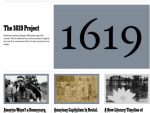
A Deep Look Into the 1619 Project and Its Controversy

How Fake News Became So Widespread and How To Put a Stop to It

9 Student Discounts All College Kids Should Use

It’s Time to Focus on Female Leaders in the Film Industry
Don't miss.

Animation vs Cartoons: A Love Letter To An Unjustifiably Underappreciated Artform

By the Way, the Universe Is Always Singing

Dark Cafes and Big Yellow Taxis—The Everlasting World of Joni Mitchell

Latine Streetwear Fashion: An Evergreen Vogue and Indigenous Resistance to Whiteness
The impact of listening to indigenous voices in 2024 america.
Mastering Long-Form Journalism: Crafting In-Depth Narratives
- Published: November 23, 2023
- By: Yellowbrick
Long-form journalism has always been an art form that captivates readers with its immersive storytelling. It allows journalists to dive deep into a subject, uncovering hidden layers and presenting a comprehensive narrative.
Crafting in-depth narratives in long-form journalism requires a unique set of skills and techniques that go beyond traditional news reporting. In this article, we will explore the essential elements of crafting compelling narratives in long-form journalism, providing aspiring journalists with valuable insights and tips to enhance their storytelling abilities.
1. Choose a Compelling Topic
The first step in crafting an in-depth narrative is selecting a topic that resonates with your audience. Look for stories that are relevant, timely, and have the potential to evoke emotions. Conduct thorough research to ensure there is enough material to support your narrative and provide a comprehensive understanding of the subject matter.
2. Conduct Extensive Research
Long-form journalism requires a deep understanding of the topic at hand. Dive into research to gather as much information as possible. Consult reputable sources, interview experts, and dig into archives to uncover valuable insights. The more knowledge you have, the better equipped you’ll be to craft a captivating narrative.
3. Define the Narrative Structure
Long-form journalism offers the freedom to experiment with narrative structures. Consider different approaches, such as chronological storytelling, character-driven narratives, or thematic explorations. Choose a structure that best suits your story and helps convey the message effectively.
4. Develop Engaging Characters
Characters play a crucial role in long-form narratives by humanizing the story and creating an emotional connection with readers. Choose characters that are compelling, relatable, and have a significant impact on the narrative. Through interviews and observations, bring these characters to life, allowing readers to empathize with their experiences.
5. Incorporate Vivid Descriptions
Long-form journalism is an opportunity to paint a vivid picture in the readers’ minds. Use descriptive language to create a sensory experience, transporting readers to the story’s setting. Engage all their senses by describing sights, sounds, smells, tastes, and textures. This attention to detail enhances the immersive nature of your narrative.
6. Utilize Foreshadowing and Suspense
To keep readers engaged throughout the story, employ foreshadowing and suspense. Tease upcoming events, hint at potential outcomes, and create a sense of anticipation. This technique builds tension and compels readers to continue reading, eager to discover what happens next.
7. Maintain a Consistent Tone and Voice
Crafting a consistent tone and voice is essential for long-form journalism. The tone should match the subject matter and evoke the desired emotional response from readers. Whether it’s authoritative, empathetic, or conversational, maintain a consistent voice throughout the narrative to establish credibility and build trust.
8. Edit and Revise
Once you’ve completed the initial draft, take the time to edit and revise your work. Look for areas where the narrative can be tightened, unnecessary details can be removed, and clarity can be improved. Pay attention to the flow of the story, ensuring smooth transitions between different sections.
9. Seek Feedback
Sharing your work with others and seeking feedback is a valuable part of the writing process. Join writing groups or seek input from trusted peers, mentors, or editors. Their perspectives can help identify areas for improvement and provide fresh insights that enhance your narrative.
10. Practice, Practice, Practice
Crafting in-depth narratives in long-form journalism is a skill that develops over time. Keep practicing your storytelling abilities through writing exercises, personal projects, or even contributing to publications. The more you practice, the more refined and compelling your narratives will become.
Crafting in-depth narratives in long-form journalism is a multi-faceted process that requires careful planning, extensive research, and impeccable storytelling skills. By selecting compelling topics, conducting thorough research, developing engaging characters, and utilizing literary techniques, aspiring journalists can master the art of long-form storytelling.
Key Takeaways
- Crafting in-depth narratives in long-form journalism requires careful planning, extensive research, and impeccable storytelling skills.
- Choose a compelling topic that resonates with your audience and conduct thorough research to gather valuable insights.
- Define the narrative structure that best suits your story, whether it’s chronological, character-driven, or thematic.
- Develop engaging characters that humanize the story and create an emotional connection with readers.
- Incorporate vivid descriptions to create a sensory experience and transport readers to the story’s setting.
- Utilize foreshadowing and suspense to keep readers engaged and eager to continue reading.
- Maintain a consistent tone and voice throughout the narrative to establish credibility and build trust.
- Edit and revise your work to ensure clarity, flow, and smooth transitions between sections.
- Seek feedback from trusted peers, mentors, or editors to gain fresh insights and improve your narrative.
- Practice your storytelling abilities through writing exercises, personal projects, and contributions to publications.
To further enhance your skills in long-form journalism, consider exploring the online courses offered by Yellowbrick . Their comprehensive training and guidance can help you excel in the field. Remember, practice makes perfect, so keep honing your skills and never stop refining your craft. To further enhance your skills in long-form journalism, consider exploring the online courses offered by Yellowbrick. They provide comprehensive training and guidance to help you excel in the field.
Enter your email to learn more and get a full course catalog!
- Hidden hide names
- Hidden First Name
- Hidden Last Name
- Email This field is for validation purposes and should be left unchanged.
More from Yellowbrick

Mastering the Art of Backline Tech: Tips & Tricks for Technicians
Explore the exciting role of a backline technician, gain insights into essential skills, career growth opportunities, and steps to achieve success in the live music industry.

Test Unlocked Resource Page
Lorem ipsum dolor sit amet, consectetur adipiscing elit, sed do eiusmod tempor incididunt ut labore et dolore magna aliqua. Ut enim ad minim veniam, quis nostrud exercitation ullamco laboris nisi ut aliquip ex ea commodo consequat. Duis aute irure dolor in reprehenderit in voluptate velit esse cillum dolore eu fugiat nulla pariatur. Excepteur sint occaecat cupidatat non proident, sunt in culpa qui officia deserunt mollit anim id est laborum.

Fashion and Identity: Exploring Expression through Style
Dive into the intricate relationship between Fashion and Identity Expression, explore how style choices communicate personal, cultural values, and the various career paths in fashion.
ABOUT YELLOWBRICK
- Work at Yellowbrick
- Privacy Policy
- Terms of Use
STUDENT RESOURCES
- Scholarships
- Student Login
- Beauty Business Essentials
- Beauty Industry Essentials
- Ecommerce Essentials
- Fashion Business Essentials
- Fashion Industry Essentials
- Footwear Business Essentials
- Gaming & Esports Industry Essentials
- Global Sports Management
- Hospitality Industry Essentials
- Music Industry Essentials
- Performing Arts Industry Essentials
- Product Design Essentials
- Sneaker Essentials
- Streetwear Essentials
- TV/Film Industry Essentials
- UX Design Essentials
©2024 Yellowbrick · All Rights Reserved · All Logos & Trademarks Belong to Their Respective Owners
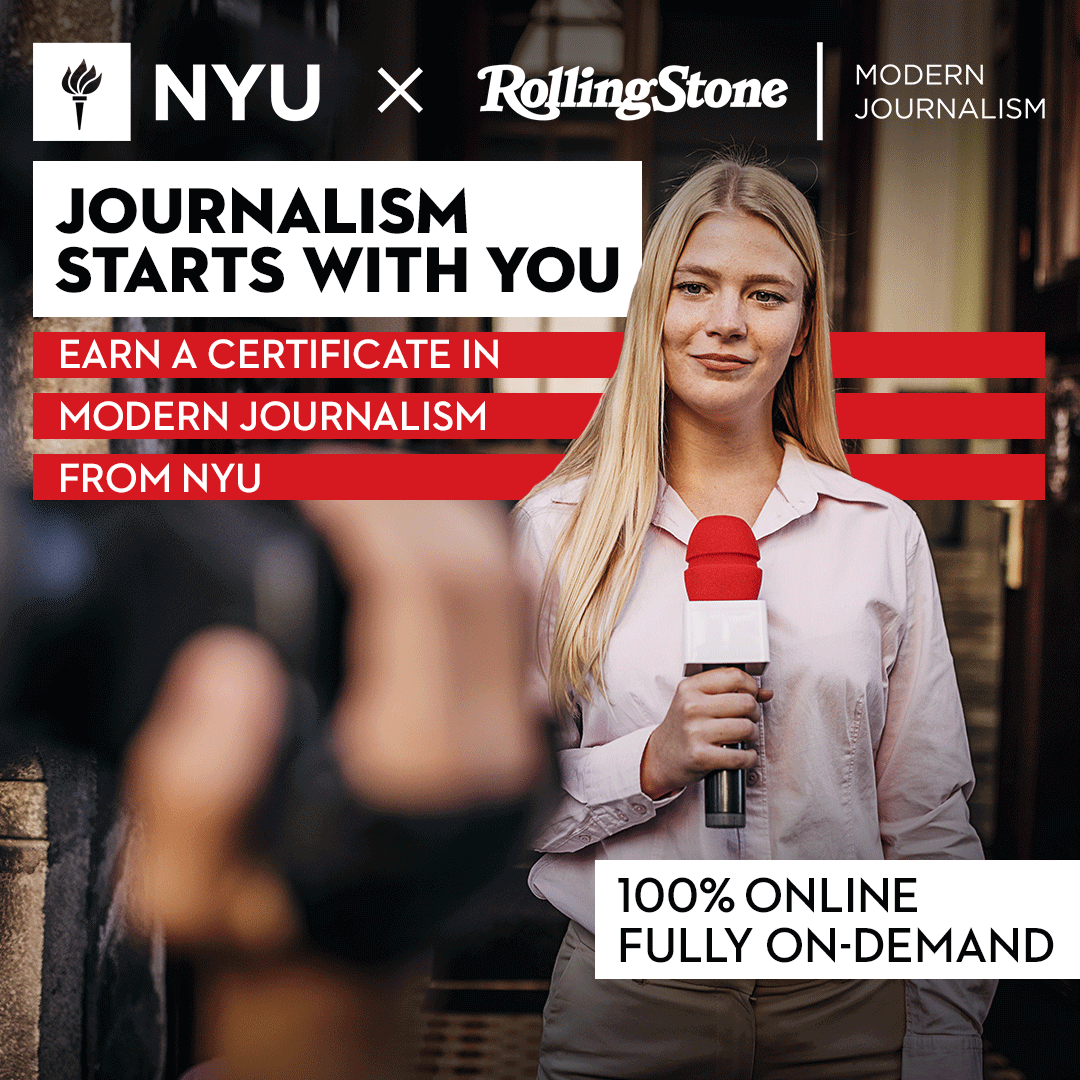
The Cheshire Library Blog
Library news, books to choose, info to peruse, a librarian’s guide to “longform” reading.
Long-form journalism is a branch of journalism dedicated to longer articles with larger amounts of content. Typically this will be between 1,000 and 20,000 words. Long-form articles often take the form of creative nonfiction or narrative journalism

There are thousands of articles that are as long as books, or as short as short stories, on thousands of different topics and subject matters. If you’re overwhelmed with where to start, I’ve compiled a list of my favorite “longform” websites, as well as several popular non-fiction titles available at the Cheshire Public Library.

All of these websites have a handy feature which lets you subscribe to their stories, which sends you articles by email on a weekly basis. This lets you cater your taste in articles, and lets you catch up on news when you have a moment. It’s a fantastic way to exercise your brain, and learn more about the world around you.

Looking for more? Here are some titles from our new non-fiction section:
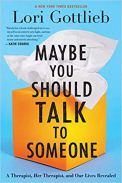
Share this post:
- Click to share on Twitter (Opens in new window)
- Click to share on Facebook (Opens in new window)
- Click to share on Pinterest (Opens in new window)
- Click to share on Tumblr (Opens in new window)
- Click to share on Reddit (Opens in new window)
- Click to email a link to a friend (Opens in new window)
- Click to print (Opens in new window)
Leave a comment Cancel reply
- Already have a WordPress.com account? Log in now.
- Subscribe Subscribed
- Copy shortlink
- Report this content
- View post in Reader
- Manage subscriptions
- Collapse this bar

80 Best Magazines & Websites That Publish Personal Essays
Wouldn’t it be great to find a whole list of magazines that publish personal essays, and even pay you for the privilege?
Well, you’re in luck because you’ve just found a list of magazines that accept essay submissions around pop culture, personal finance, personal stories, and many other topics. If you’re passionate about crafting personal essays and your work typically falls within a range of 600 to 10,000 words, consider submitting your essays to the organizations listed below. They generally offer compensation of $50-$250 for each accepted essay. After this guide, you may also want to check my list of the best essays of all time .
Here are the top magazines and publications that publish thought-provoking essays:
1. the new york times – modern love.
“Modern Love” accepts essay submissions via email at [email protected] with the essay subject or potential title as the email subject line. Submissions should be original, true stories between 1,500 and 1,700 words, sent both as an attached Microsoft Word-compatible document and pasted into the body of the email. The team collaborates with writers on editing, and authors are compensated for published work. Submission info .
2. The New York Times – Opinion Essays
To submit an essay to this publication, fill out the provided submission form with the essay and a brief explanation of your professional or personal connection to its argument or idea. The essay should include sources for key assertions (either as hyperlinks or parenthetical citations). Although all submissions are reviewed, the publication may not be able to respond individually due to the high volume of entries. If there’s no response within three business days, authors are free to submit their work elsewhere. Submission info .
3. Dame Magazine
DAME is a women’s magazine that prioritizes accessible and intersectional journalism that dives into context rather than breaking news. Their stories are unexpected, emotional, straightforward, illuminating, and focused on people rather than policy. They aim to reveal new or surprising information, provoke action or empathy, simplify complex issues, introduce fresh ideas, and foreground the people most affected by discussed topics. Submission info .
4. The New Yorker
The New Yorker welcomes letters to the editor sent to [email protected] and includes your postal address and phone number. For fiction submissions, send your work as a PDF to [email protected] or mail it to their New York address. They review all submissions within ninety days and will only contact you if they decide to publish your work. Submission info .
5. The Atlantic
The Atlantic is keen on high-quality nonfiction, fiction, and poetry. Familiarity with their past publications can guide your submission. All manuscripts should be submitted as a Word document or PDF. They only respond if they’re interested in discussing your submission further. Separate submission channels exist for fiction and poetry. Submission info .
6. The Globe and Mail
The Globe and Mail welcomes your original experiences, viewpoints, and unique perspectives for your daily first-person essay. A good essay should have an original voice, an unexpected view, humor, vivid details, and anecdotes that illuminate a wider theme. While a successful essay could be funny, surprising, touching, or enlightening, it should always be personal and truthful, rather than political or fictional. Submission info .
7. The Guardian
To contribute to this publication, you should identify the most relevant section and contact the commissioning editor with a brief outline of your idea. You may be invited to submit your work speculatively, meaning payment will only be provided if your contribution is published. It’s important to note that your contribution should be sent electronically and will be published under standard copyright terms with payment at normal rates unless agreed otherwise before publication. Submission info .
8. Los Angeles Times
The Los Angeles Times is open to opinion articles on any subject, with most published pieces being about 750 words long. Submissions must be exclusive to them and not published elsewhere, including personal blogs or social media. Full drafts of articles are required for consideration and should include the author’s name, the topic, the full text, a short author biography, and contact information. Submission info .
9. The Sun Magazine
The Sun publishes personal essays, short stories, and poems from both established and emerging writers globally, particularly encouraging submissions from underrepresented perspectives. Their contributors’ work often garners recognition in prestigious anthologies and prizes. The Sun seeks personal essays that are deeply reflective, celebrating hard-won victories or exploring big mistakes, aiming to make newsworthy events feel intimate and wrestle with complex questions. Submission info .
Slate invites pitches that are fresh, and original, and propose strong arguments. They appreciate ideas that challenge conventional wisdom and encourage you to clearly articulate the insights your reporting can uncover. A concise pitch is preferred, even if a full draft is already written. You should include a short bio and any relevant published work. They advise waiting a week before pitching to other publications, and if an editor passes, refrain from sending it to another editor at Slate. Submission info .
VICE is primarily interested in mid-length original reports, reported essays, narrative features, and service journalism related to contemporary living and interpersonal relationships. They welcome stories informed by personal experiences and insight but advise writers to consider what makes their story unique, why they’re the right person to tell it, and why it should be on VICE. While all stories don’t need to be tied to current events, a timely element can distinguish a pitch. They also accept quick-turnaround blogs and longer features. Submission info .
12. Vox Culture
Vox Culture seeks to provide readers with context and analysis for understanding current entertainment trends. They are interested in pitches that answer significant questions about major movies, TV shows, music artists, internet culture, fame, and women’s issues in the entertainment business. Notably, they are not interested in personal essays or celebrity interviews. Past successful stories have ranged from exploring Disney’s move away from traditional villains to analyzing historical inaccuracies in popular shows. They accept story pitches ranging between 1,000 and 2,500 words. Submission info .
Aeon, a unique digital magazine since 2012, is known for publishing profound and provocative ideas addressing big questions. Their signature format is the Essay, a deep dive into a topic, usually between 2,500-5,000 words, approached from a unique angle and written with clarity to engage curious and intelligent general readers. Aeon’s contributors are primarily academic experts, but they also welcome those with significant professional or practical expertise in various fields. Submission info .
14. BuzzFeed Reader
This platform welcomes freelance pitches on cultural criticism, focusing on current or timeless topics in various categories like books, technology, sports, etc. Essays should offer a unique perspective on how these subjects reflect our society. The content must be relevant, advance ongoing dialogues, and add value to the existing discourse. Submission info .
15. The Boston Globe
Boston Globe Ideas welcomes a variety of content including op-eds, reported stories, book excerpts, first-person essays, and Q&A features. Submissions should be sent directly, not as pitches. Please include your submission in the body of the email, not as an attachment. Briefly explain why you’re uniquely qualified to write this piece. Ensure your submission hasn’t been published or under review elsewhere. Submissions page .
16. The Bold Italic
This platform is actively seeking submissions in the genre of personal narrative essays. These pieces can encompass a broad range of experiences from the hilariously light-hearted to deeply poignant, encapsulating the vibrant and diverse experiences of living in your community. Submission info .
Before pitching to a Medium Publication, thoroughly understand its unique style by reviewing published content and submission guidelines. This ensures your work aligns with their preferences. With numerous Medium Publications available, persist in your submissions until you find a fitting outlet. Submission info .
18. Refinery29
Refinery29 Australia is committed to empowering women and underrepresented groups, with a particular focus on Australian women and trans and gender-diverse individuals, primarily Gen-Z and millennials. We publish a diverse array of content, from timely personal essays to reports on race, reproductive rights, and pop culture, all with a distinctly local perspective. They aim to shed light on the world around us, and highly value pieces that capture the unique Australian experience, be it in subject matter or authorial voice. Submission info .
ELLE’s annual talent competition is back for, seeking out the next superstar in writing. The winner will have their 500-word piece, inspired by the hashtag #RelationshipGoals and focusing on a significant relationship in their life. Submission info .
20. Cosmopolitan
Cosmopolitan is looking for first-person features that cover all aspects of beauty. This can include writing personal essays or narratives about your struggles with adult acne, your journey to an all-natural beauty routine, or other unique beauty experiences. We are also open to opinion pieces about beauty trends or movements that resonate with you. Submission info .
Bustle encourages freelance pitches across different verticals such as Lifestyle, Books, News and politics, Fashion and beauty, and Entertainment. We value pitches that are brief yet comprehensive, including a sample headline, a 2-3 sentence description of the piece, your plan for photos, sources you have access to, your clips if you haven’t written for us before, and your standard rate. Make sure to understand what we’re looking for and convey your story idea clearly and professionally. Submission info .
22. The Walrus
The Walrus seeks short essays (up to 1,200 words) that are timely, focused, and sourced from Canada and globally. These can be reported narratives, memoirs, or mini-features on specific topics. Each essay should exhibit a distinct argument, a strong writing voice, and present an original and significant viewpoint. Writers new to The Walrus or those without long-form journalism experience are particularly encouraged to contribute to this section. Submission info .
23. Autostraddle
Autostraddle welcomes pitches, works in progress, and completed submissions. Any issues with the submission form should be emailed to Laneia Jones with the subject line “SUBMISSION ERROR”. Questions about the submission process can be directed to Kayla Kumari Upadhyaya with “SUBMISSION PROCESS” in the subject line. Please note that pitches or submissions sent via email will not be accepted. Submission info .
24. Narratively
Narratively focuses on original and untold human stories, welcoming pitches and completed submissions from diverse voices. They use Submittable for managing submissions. To better understand what they’re looking for in new writers, contributors can review their guidelines, and the best pitches they’ve received, and ask questions to their editors about how to pitch. Submission info .
25. Catapult
Catapult offers a regularly updated list of submission and freelancing opportunities. Some current options include Black Fox Literary Magazine, open for fiction submissions; Carina Press, seeking romance manuscripts; Elegant Literature, welcoming submissions for its contest; Inkspell Publishing, looking for romance manuscripts; Interlude Press, seeking original novels featuring diverse casts; and Intrepid Times, accepting stories about romance while traveling. Submission info .

26. Jezebel
At Jezebel, the high volume of daily emails (over 500), including tips and questions from readers, makes it impossible to respond to all of them, even though they are all read and appreciated. Their primary job involves posting 60+ items a day, and due to workload constraints, they may not always be able to reply to your email. Submission info .
27. Bitch Media
Bitch Media seeks pitches offering feminist analysis of culture, covering a wide array of topics including social trends, politics, science, health, life aspects, and popular culture phenomena. They publish critical essays, reported features, interviews, reviews, and analyses. First-person essays should balance personal perspectives with larger themes. Both finished work and query letters are welcome. However, due to the volume of submissions, they cannot guarantee a response or that every pitch will be read. Submission info .
28. Broadview
Broadview magazine prefers pitches from professional writers for unique, audience-focused stories. While unsolicited articles may be accepted, the initial idea pitch is recommended. Responses to each pitch are not guaranteed due to high submission volumes. Submission info .
29. Briarpatch Magazine
Briarpatch Magazine accepts pitches on a variety of political and social issues, valuing stories from diverse voices. They seek well-researched, fact-backed pieces aimed at a non-specialist, progressive audience. They recommend writers to first pitch their ideas, including contact info, estimated word count, recent publications, and a short writing sample. The magazine aims to respond within one to two weeks after the pitch deadline for each issue. Submission info .
30. Maisonneuve
Maisonneuve Magazine welcomes non-fiction writing submissions in various forms (reporting, essays, memoirs, humor, reviews) and visual art (illustration, photography, comics). They do not accept fiction, poetry, or previously published work. They prefer well-developed, well-researched pitches, but also accept polished drafts if the writer is open to edits. To understand what the magazine is looking for, it’s recommended to read some recent issues or check their website. Submission info .
31. Room Magazine
Room Magazine seeks original fiction, poetry, creative non-fiction, and art from individuals of marginalized genders, including women (cisgender and transgender), transgender men, Two-Spirit, and nonbinary people. Simultaneous submissions are welcome, and submissions can be made through Submittable. Submission info .
32. Hazlitt
Hazlitt is currently not accepting submissions but it might reopen soon. They seek original journalism, investigative features, international reporting, profiles, essays, and humor pieces, but they are not considering unsolicited fiction. Pitches with proposed word counts are preferred, and they have a section called “Hazlitt Firsts” for reviews of experiencing mundane things for the first time as adults. Submission info .
33. This Magazine
This Magazine seeks pitches for their annual Culture Issue with a DIY theme, open to various topics related to DIY spirit. They publish Canadian residents only and prefer queries over already completed essays or manuscripts. They look for unique stories with a social justice angle, and pitches should include reasons for telling the story, relevant sources, and potential takeaways for readers. Submission info .
34. Geist Magazine
Geist magazine seeks submissions with a literary focus, including short non-fiction for the Notes & Dispatches section (around 800-1200 words) with a sense of place, historical narrative, humor, and personal essays on art, music, and culture. They encourage submissions from diverse writers and will pay writers $300-500 for accepted pieces. Submission info .
35. Discover Magazine
Discover magazine seeks pitches from freelance writers for science-related stories that enlighten and excite readers, with a conversational tone and high reader interest. Pitch one idea per email, mentioning the newness of the science and specific studies and researchers to be cited. Include your science-writing credentials and best clips in the pitch and send them to [email protected]. Payment starts at $1/word for print and typically $300/story for web, with rights purchased for both. Submission info .
36. Eater Voices
Eater Voices accepts personal essays from chefs, restaurateurs, writers, and industry insiders about the food world. To pitch, email a brief explanation of the topic and why you are the right person to write about it to [email protected]. Submission info .
37. The Temper
The Temper is an online publication focused on sobriety, addiction, and recovery, challenging drinking culture. They seek diverse and intersectional stories written through the lens of addiction, covering various topics like sex, food, relationships, and more. Submissions are currently closed, but they are especially interested in amplifying voices from marginalized and underrepresented groups. Submission info .
38. Chatelaine
Chatelaine is a prominent Canadian women’s magazine covering health, current events, food, social issues, decor, fashion, and beauty. To pitch, read the magazine first, and submit a one-page query letter explaining the idea’s fit for the magazine, section, and format. They prefer email submissions with at least two previously published writing samples, and response time may take six to eight weeks. Submission info .
39. Conde Nast Traveler
Condé Nast Traveler seeks pitches for reported and personal travel stories with inclusive coverage, including BIPOC, LGBTQ+, and disabled communities. Focus on stories and angles rather than destinations, check for previous coverage, and offer a fresh perspective. If pitching a personality, indicate exclusivity and access. Consider your expertise in telling stories, especially about marginalized communities, and disclose any sponsorships. Keep pitches brief, including a suggested headline, angle, sources, and why it’s timely. Responsible travel stories are prioritized during the pandemic. Submission info .
40. Boston Globe Ideas
Globe Ideas is dedicating an entire issue to young people’s voices and stories. Teens are invited to share their aspirations, concerns, and experiences about mental health, school, social media, and more, up to 700 words or through short notes, videos, or illustrations. This is a chance for teens to set the record straight and tell the world what matters most to them. Submission info .
41. Babbel Magazine
Babel welcomes submissions from all linguists, focusing on accessible and stimulating articles about language. Writers can submit feature articles or propose ideas for regular features, and guidelines for contributions are available for download. For those with ideas but not interested in writing, they can also suggest topics for articles through email. Submission info .
42. HuffPost Personal
HuffPost seeks to amplify voices from underrepresented communities, including BIPOC, LGBTQ, and people with disabilities. They accept freelance pitches on a wide range of topics, providing clear guidelines for submissions. They also encourage visual creatives to submit their work, and all published contributors are paid for their work. Please note that due to the volume of submissions, individual responses may not be possible. Submission info .
43. Adelaide Literary Magazine
Adelaide magazine accepts submissions in various categories, including fiction, poetry, creative nonfiction, translations, book reviews, interviews, and art/photography. Fiction and nonfiction submissions have a size limit of 5,000 words, while book reviews have a limit of 2,000 words. They do not accept previously published work or simultaneous submissions. Artists retain all rights to their work, and upon publication, rights revert to the author/artist. Submission info .
44. bioStories
BioStories welcomes nonfiction prose submissions of 500 to 7500 words, with the typical piece being around 2500 words. Submit via email to [email protected], pasting the submission in the email body with the subject line “biostories submission” and your last name. Simultaneous submissions are accepted, but immediate notification is required if accepted elsewhere. Multiple submissions are allowed at a one-month interval, and the work must be previously unpublished in print and online. Noncompliant submissions will not receive a response. Submission info .
45. Quarter After Eight
Quarter After Eight welcomes innovative writing submissions in any genre from both new and established writers. To withdraw work, use the “withdraw” option on Submittable for the entire submission or the “note” function to specify which pieces to withdraw; do not email about withdrawals. Submission info .
46. The Rappahannock Review
The Rappahannock Review accepts original and innovative writing in various genres, including fiction, nonfiction, poetry, and audio pieces. They encourage experimentation and creativity, seeking enthralling voices and compelling narratives. Additionally, the magazine showcases a variety of visual artists and welcomes submissions for consideration in each new issue. Submission info .
Allure is seeking writers to contribute pieces that explore beauty, style, self-expression, and liberation. They are looking for writers with relevant credentials and experience in the field, and they offer compensation of $350 for reported stories and $300 for personal essays. Submission info .
48. MLA Style Center
The Modern Language Association is inviting students to submit research papers written in MLA style for consideration in their online collection “Writing with MLA Style.” Essays should be 2,000 to 3,000 words in length and must be written in English. Works-cited-list entries do not count toward the word limit. Submission info .
49. Marie Claire
Marie Claire magazine is dedicated to highlighting the diversity and depth of women’s experiences. They offer award-winning features, essays, and op-eds, as well as coverage of sustainable fashion, celebrity news, fashion trends, and beauty recommendations. Submission info .
SELF magazine is actively seeking new writers, particularly from marginalized communities, to contribute to their health and wellness content. They are interested in pitches that offer helpful insights on topics related to health, fitness, food, beauty, love, and lifestyle. The focus should be on improving personal or public health clearly and straightforwardly. Submission info .
51. Her Story
HerStry is a platform that focuses on the experiences of women-identifying persons, including cisgender women, transgender women, non-binary persons, and more. They accept personal essays that are true stories about the author, with a length between 500 to 3,000 words. They pay $10 for each published personal essay here, but there is a $3 submission fee (with limited free submission periods). Stories are read blind, and explicit or offensive content is not accepted. Submission info .
52. Griffith Review
Griffith Review accepts submissions based on specific themes for each edition. They welcome new and creative ideas, allowing writers to express their voices in essays, creative and narrative nonfiction-fiction, and analytical pieces. Submissions should generally range from 2,000 to 5,000 words, with up to four poems allowed on theme. Submission info .
53. Literary Review of Canada
The Literary Review of Canada welcomes prospective writers, photographers, and illustrators to submit specific review proposals, essay pitches, or general queries. They prefer to receive unsolicited review topics and essay ideas rather than completed work and do not accept simultaneous submissions. Submission info .
54. Harper’s Magazine
For Harper’s Magazine, nonfiction writers should send queries accompanied by a self-addressed, stamped envelope. Ideas for the Readings section can be sent to [email protected], but individual acknowledgment is not guaranteed due to volume. All submissions and queries must be sent by mail to their New York address. Submission info .
55. Virginia Quarterly Review
VQR only considers unpublished work, submitted online via Submittable. One prose piece and four poems are allowed per reading period, but multiple submissions in the same genre will be declined unread. Simultaneous submissions are permitted, but if accepted elsewhere, notify them immediately via Submittable. Submission info .
56. The New England Review
New England Review is open for submissions in all genres during specific periods. They accept fiction, poetry, nonfiction, dramatic writing, and translations. The magazine only considers previously unpublished work, and simultaneous submissions are allowed. They welcome submissions from writers of all backgrounds and encourage diverse perspectives. Submission info .
57. One Story
One Story seeks literary fiction between 3,000 and 8,000 words, any style, and subject. They pay $500 and provide 25 contributor copies for First Serial North American rights. Only unpublished material is accepted, except for stories published in print outside North America. Simultaneous submissions allowed; prompt withdrawals upon acceptance elsewhere. Accepts DOC, DOCX, PDF, and RTF files via Submittable. No comments on individual stories. No revisions of previously rejected work. Translations are accepted with proper attribution. No emailed or paper submissions, except for incarcerated individuals. Submission info .
58. The Threepenny Review
The Threepenny Review accepts submissions for fiction, poetry, travel essays, and Table Talk pieces. They pay $400 per story/article and $200 per poem, granting first serial rights and copyright reversion to the author. Mailed manuscripts require a self-addressed stamped envelope, while online submissions should be in Word format with a single document for prose or poetry. Submission info .
59. Zoetrope: All-Story
Zoetrope: All-Story is currently not accepting general submissions. They will announce when submissions reopen and update the guidelines accordingly. Submission info .
60. American Short Fiction
American Short Fiction accepts regular submissions of short fiction from September to December. The magazine publishes both established and new authors , and submissions must be original and previously unpublished. Manuscripts should be typed, double-spaced, and accompanied by the author’s contact information. Simultaneous submissions are allowed, but authors must withdraw their work if accepted elsewhere. Payment is competitive and upon publication, with all rights reverting to the author. American Short Fiction does not accept poetry, plays, nonfiction, or reviews. Submission info .
61. The Southern Review
The Southern Review accepts work during its submission period. They only consider unpublished pieces in English and accept simultaneous submissions. If your work is accepted elsewhere, promptly notify them via email with the subject line “withdrawal.” Do not submit work via email, as it will be discarded. They do not consider submissions from anyone currently or recently affiliated with Louisiana State University within the past four years. It is recommended to familiarize yourself with the journal’s aesthetic by subscribing before submitting your work. Submission info .
62. Boulevard Magazine
Boulevard seeks to publish exceptional fiction, poetry, and non-fiction from both experienced and emerging writers. They accept works of up to 8,000 words for prose and up to five poems of up to 200 lines. They do not consider genres like science fiction, erotica, horror, romance, or children’s stories. Payment for prose ranges from $100 to $300, while payment for poetry ranges from $50 to $250. Natural Bridge Online publication offers a flat rate of $50. Submission info .
63. The Cincinnati Review
The Cincinnati Review accepts submissions for its print journal during specific periods: September, December, and May. miCRo submissions are open almost year-round, except during the Robert and Adele Schiff Awards and backlogs. They welcome submissions from writers at any stage, except current/former University of Cincinnati affiliates. Simultaneous submissions are allowed, and response time is around six months. Payment is $25/page for prose, $30/page for poetry in print, and $25 for miCRo posts/features. Submission info .
64. The Antioch Review
The Antioch Review seeks nonfiction essays that appeal to educated citizens, covering various social science and humanities topics of current importance. They aim for interpretive essays that draw on scholarly materials and revive literary journalism. The best way to understand their preferences is to read previous issues and get a sense of their treatment, lengths, and subjects used in the publication. Submission info .
AGNI’s online Submission Manager is open from September 1st to midnight December 15th, and again from February 15th to midnight May 31st. Manuscripts can also be submitted by mail between September 1st and May 31st. AGNI considers prose in various genres, including personal essays, short stories, prose poems, and more. They do not publish academic essays or genre romance, horror, mystery, or science fiction. Simultaneous submissions are welcome, and sending through the online portal incurs a $3 fee, but regular mail submissions can be made to avoid the fee. Submission info .
66. Barrelhouse
Barrelhouse accepts unsolicited submissions for book reviews through their Submittable online submissions manager. They pay $50 to each contributor and accept simultaneous submissions. There is no maximum length, but most published pieces are shorter than 8,000 words. They only accept Word or rich-text (.rtf) files and prefer poetry to be submitted as a single document. Submissions for their print and online issues are currently closed, but book reviews are open. Response time is approximately six months. Submission info .
67. Tin House Online
Tin House is a good company that offers a two-day submission period three times a year for writers without a current agent and no previous book publication (chapbooks accepted). They accept fiction, literary nonfiction, and poetry, both in English and in translation (with formal permission). Completed drafts are required. They are particularly interested in engaging with writers from historically underrepresented communities. Submission info .
68. One Teen Story
One Teen Story publishes 3 stories annually and welcomes submissions from teen writers aged 13-19. They seek original, unpublished fiction across genres, focusing on the teen experience. Great short stories with compelling teen characters, strong writing, and a well-structured narrative are encouraged for submission to their contest. Submission info .
69. Bennington Review
Bennington Review accepts unsolicited submissions through Submittable during their reading periods in fall, winter, and spring. They seek innovative and impactful fiction, creative nonfiction, poetry, film writing, and cross-genre work. Response times vary, but they aim to respond within five to eight months. Accepted contributors will receive payment ranging from $25 per poem to $250 for prose over six typeset pages, along with two copies of the published issue and a copy of the subsequent issue. Submission info .
70. Epoch Literary
Epoch Literary accepts poetry submissions of up to five poems, short fiction or essay submissions as a single piece or a suite of smaller pieces, and visual art and comics for the cover. They do not publish literary criticism or writing for children and young adults. Electronic submissions are open in August and January, with a $3 fee, part of which supports the Cornell Prison Education Program. Submission info .
71. The Gettysburg Review
The Gettysburg Review accepts poetry, fiction, essays, and essay reviews from September 1 to May 31, with a focus on quality writing. Full-color graphics submissions are accepted year-round. It’s recommended to read previous issues before submitting, and sample copies are available for purchase. The journal stays open during the summer for mailed submissions or those using Submittable and purchasing a subscription or the current issue. Submission info .
72. Alaska Quarterly Review
The publication accepts submissions of fiction, poetry, drama, literary nonfiction, and photo essays in traditional and experimental styles. Fiction can be short stories, novellas, or novel excerpts up to 70 pages, and poetry submissions can include up to 6 poems. They aim to respond within 4 to 12 weeks, but authors can inquire about their manuscript status after 4 weeks if needed. Submission info .
73. Colorado Review
Colorado Review only accepts submissions through its Submittable portal and no longer accepts paper submissions. They encourage writers to be familiar with their publication before submitting and provide sample copies and examples of recently published work on their website. They look for engaging stories with original characters, crisp language , and a provocative central problem or issue. Submission info .
74. The Georgia Review
The Georgia Review accepts submissions both online and by post, but not via email. Submissions are free for current subscribers. They do not consider unsolicited manuscripts between May 15 and August 15 and aim to respond within eight months. Previously published work will not be considered, and simultaneous submissions are allowed if noted in the cover letter. They offer different prizes for poetry and prose and accept submissions in fiction, poetry, essays, and book reviews. Submission info .
75. New Letters
New Letters accepts submissions year-round through Submittable, with a small fee waived for current subscribers. They welcome up to six poems, one chapbook, one piece of nonfiction, one short story (graphic or traditional), or one novella per submission. Simultaneous submissions are allowed if notified, and response time is approximately six months. They publish short stories up to 5,000 words, novellas up to 30,000 words, graphic short stories up to ten pages in color or black and white, and chapbooks up to 30 pages. Submission info .
76. Shenandoah
Submissions for comics will reopen soon. The Graybeal-Gowen Prize for Virginia Poets will be open for a limited time. Poetry submissions are considered in November and spring. Prose submissions will open soon. Short stories, creative nonfiction, and flash fiction are welcome. Editor Beth Staples looks for writing that challenges and offers diverse perspectives. Submission info .
77. TriQuarterly
TriQuarterly, the literary journal of Northwestern University, welcomes submissions in poetry, fiction, creative nonfiction, video essays, short drama, and hybrid work from both established and emerging writers. They are especially interested in work that engages with global cultural and societal conversations. Submissions are accepted through Submittable, and they charge a small reading fee. Submission windows vary by genre. Submission info .
78. E-International Relations
E-International Relations invites current and former undergraduate and Master’s students to submit their highest-graded essays and dissertations for publication. They seek work that is of academic utility to other students and demonstrates engagement with the subject, using pertinent case studies/examples and engaging with complex literature and ideas. Submissions must meet specific entry criteria, including word count, language standards, and full bibliographic references. Submission info .
79. Longreads
Longreads publishes the best long-form nonfiction storytelling and accepts pitches for original work. They pay competitive rates and prefer pitches via email to [email protected]. Fiction is not accepted, and submissions using generative AI tools will be rejected. You can also nominate published stories by tweeting with the #longreads hashtag. Submission info .
80. Education Week
EdWeek welcomes submissions from various perspectives within the K-12 education community, including teachers, students, administrators, policymakers, and parents. Submissions should be concise, relevant to a national audience, and have a clear point of view backed by factual evidence. We value solution-oriented and practical pieces that offer best practices, policy recommendations, personal reflections and calls to action. Essays longer than 1,000 words or shorter than 600 words will not be considered. Please submit in Word format via email. Submission info .
If you want to get your essays published in a print magazine or an online publication, it’s time to approach the appropriate section editor or send your work via a submissions page. Even in a world where so much content is produced by AI, publications are still interested in receiving great writing written in a conversational tone. Just make sure to follow the guidelines (especially those around word count) and show off your flamboyant writing style in a prestigious online magazine. Next up, you might want to check a list of the top sites that will pay you to write, or my extensive list of publishing companies .

Get your free PDF report: Download your guide to 100+ AI marketing tools and learn how to thrive as a marketer in the digital era.

Rafal Reyzer
Hey there, welcome to my blog! I'm a full-time entrepreneur building two companies, a digital marketer, and a content creator with 10+ years of experience. I started RafalReyzer.com to provide you with great tools and strategies you can use to become a proficient digital marketer and achieve freedom through online creativity. My site is a one-stop shop for digital marketers, and content enthusiasts who want to be independent, earn more money, and create beautiful things. Explore my journey here , and don't miss out on my AI Marketing Mastery online course.
Subscribe to our newsletter
1,000 great longform articles and essays.
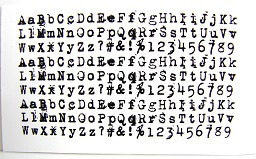
Art and Culture
Great articles that became films, spelling, punctuation and grammar, short memoir examples, weird and wonderful, linguistics, margaret atwood, james baldwin, michael chabon, joan didion, annie dillard, david foster wallace, adam gopnik, paul graham, christopher hitchens, leslie jamison, walter kirn, chuck klosterman, toni morrison, david sedaris, zadie smith, john j. sullivan, e. b. white, lidia yuknavitch, intelligence, social psychology, personality, consumerism, procastination, digital distraction, life hacking, body language.
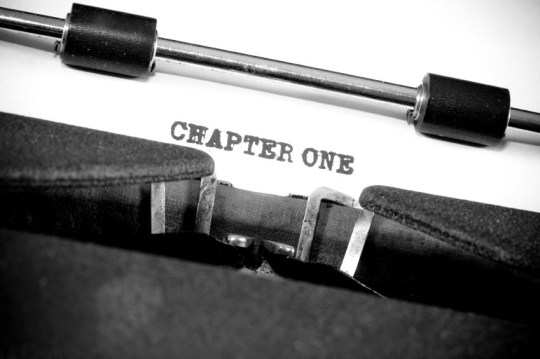
Science Writers
Gregg easterbrook, jared diamond, david dobbs, atul gawande, malcolm gladwell, james gleick, veronique greenwood, robin marantz henig, elizabeth kolbert, charles c. mann, marshall mcluhan, stephen pinker, michael specter, carl zimmer, documentaries, the environment, visual poetry, resources for teachers, mentor texts, common app examples, science and technology, scientific method, transportation, information, the apocalypse.

Computers and the Internet
The internet, social media, video games, online business, climate change, natural resources, viruses and disease, medical science, the medical industry, mental health, reproductive health, vaginas wombs and menstruation, north america, latin america, north korea, the middle east, israel/palestine, american culture, african americans.

Journalists
Mark bowden, tom chiarella, michael finkel, devin friedman, elizabeth gilbert, david graeber, mark jacobson, william langewiesche, jeanne marie laskas, john mcwhorter, michael lewis, susan orlean, michael paterniti, kathryn schulz, matt taibbi, hunter s. thompson, jia tolentino, wells tower, gene weingarten.
About The Electric Typewriter We search the net to bring you the best nonfiction, articles, essays and journalism

Themed Submissions: Long-form
Narratives sometimes run long. Like, ten-or-twenty-thousand-words, long. And for the next two months, that’s just fine by us. In a world of shortening attention spans, we want to sit down and take our time with a perfect story or poem, regardless of length. We want your most ambitious long-form writing in its most imaginative form. Long short stories. Epic poetry. Deep-dive essays. Novelettes. Novellas. If other publishers think it’s too long, we want to read it. As always, wow us. Thrill us. Never bore us. We’re eager to read your best. Deadline 8/15/21.
When ready to submit, please use our online submission system .
What We Publish:
Fiction : Submissions should generally not exceed forty thousand* (40,000) words.
Creative Nonfiction : Submissions should generally not exceed forty thousand* (40,000) words. All genres of nonfiction (articles, reviews, memoirs , personal essay, cross-genre, etc.) are acceptable, though we rarely publish scholarly essays or literary criticism.
Poetry : Maximum three (3) poems per submission.
*Length guidelines are just that: guidelines . More than ever, if your work is outstanding, we’ll make room for it.
A Note on Themed Submissions:
Themed submissions are considered alongside our general submission pool. Themed submissions are not contests resulting in a predetermined minimum or maximum number of publications (we hate turning good writing away for the sake of contest rules). Any piece which is a good fit will be published in Sequestrum and is subject to standard rights and payment as outlined on our submission guidelines . Selected pieces are not published as a batch or part of a “themed” issue but are instead proudly displayed right alongside every other Sequestrum publication. We implement deadlines to transition between calls, with roughly four themes per year. Multiple and simultaneous submissions allowed. Our standard reading fee and free subscriber submission rules apply.
We’re trying to keep things simple. Themed submissions are a call for the sort of writing we’re hungry to read. As our tastes change, so will our themes. We’re hoping to be surprised. We’re hoping to find exactly the stories and poems we’re looking for. We’re hoping to fall in love with writing we never realized we needed.
Send away. We’re eager to read your best.

Publication Rights : We publish only previously unpublished work (unless otherwise stated). If we select your submission for publication, you grant us First Internet Publishing Rights and Exclusive Rights for the first three months your work appears with Sequestrum. Rights include Nonexclusive Archival Rights: We archive all published work indefinitely in our online archives. At the time of publication, all other rights revert to the author. If your work is republished elsewhere, credit Sequestrum as original publisher.
Payment: We believe good writing deserves recognition and offer a small cash honorarium of $20 for all writers we publish. In addition, all contributors receive a complimentary 6 month subscription redeemable at any time after acceptance.
Deadlines : Sequestrum occasionally closes submissions early to finalize upcoming issues, catch up on reading, keep our eyes from bleeding, etc. Subscribe to our newsletter for updates: https://www.sequestrum.org/submission-updates .
Academia.edu no longer supports Internet Explorer.
To browse Academia.edu and the wider internet faster and more securely, please take a few seconds to upgrade your browser .
Enter the email address you signed up with and we'll email you a reset link.
- We're Hiring!
- Help Center

Story First— Publishing Narrative Long-Form Journalism in Digital Environments

2014, Journal of Magazine & New Media Research
Narrative long-form journalism is going through an international upswing. Existing media companies and journalistic start-ups have taken narratives into the digital environment, using multimedia elements to tell their stories in new ways and attempting to get their stories to become viral. This essay analyses The Atavist and Long Play as examples of long-form nonfiction publications, and offers results from a small international survey of long-form publishers. The findings suggest that digital online environment provides narrative journalism with new possibilities, such as multimedia elements and online presence, which have the potential to both strengthen the authenticity of a story and weaken its immersive effect due to too many sensory stimuli.
Related Papers
Aleksandr Gorbachev
Coming up with a tentative thematic typology for longform journalism, the paper then uses it to try to understand how digital longform publications are different from the print ones in terms of the subjects they cover. It turns out they are; for example, digital publications appear to be heavier on international coverage and easier on in-depth policy pieces. 295 stories published in six publications (four print and two digital) were analyzed.
Maria Lassila-Merisalo
The article discusses narrative journalism in digital environments with the help of three attributes: text-orientation, linearity, and immersion. Media companies have been rather slow in taking advantage of the potentials of the Internet. In the last years the development has been faster, and there is a wide range of digital narrative journalism from print-alike text-oriented stories to nonlinear experiments. However, the challenges of monetization set restrictions to creativity, as publishers have to choose between for instance creating an immersive entity and meeting the needs of advertisers.
Sybil Nolan
Marcel Broersma , Chris Peters
Storytelling is at the centre of journalism practice. It is the key for communicating with the audience and it exerts a heavy influence over how news is perceived in the public sphere. In the digital era the way in which journalists tell stories is undergoing a dramatic shift. New media offer new possibilities, while they at the same time stimulate traditional media to search for new venues to convey their stories in an attractive and authoritative way. This volume addresses how journalism tries to find and craft new forms and genres of storytelling. It questions how these transitions stimulate new journalistic practices and shift the institutional function and ethics of journalism. What does it means to tell newsworthy and trustworthy stories in a digital age?
Chris Peters
Journal of Sociolinguistics
Betsy Rymes
Raquel Longhi
A recent phenomenon in online journalism, longform journalism has been drawing attention for its characteristics, especially in regards to the text’s size and depth, in contrast with early online journalistic narratives, based on a simple and fragmented text. The trend stands out in major newspapers and renowned magazines, in products such as large multimedia reports that proliferate in websites specialized in this format. In the ever-changing scenery and evolution of online journalism, discussions regarding the effectiveness of this type of narrative as far as their consumption come up for debate. The purpose of this article is to discuss and question longform journalism, investigating where, how it is done, and how it is being read. Through a literature review and interviews with newspaper editors of the online paper Folha de S. Paulo and the UOL portal, the article uses the exploratory method with the objective of defining the “state of the art” of this phenomenon, and questioning its consumption.
Jill Walker Rettberg
ATLAS Technical Reports
Kevin T Moloney
This paper examines the emergent entertainment and advertising technique of transmedia storytelling as a method for journalists to target their work to an increasingly dispersed public across an unlimited array of both digital and analog media. In doing so, I argue, journalists can better reach a relevant and decisive public with more engaging, complex and nuanced stories. I will examine the elements of transmedia storytelling, and discuss how different parts of its method have been used in two journalistic cases. I will conclude with a hypothetical example of how it might be used to fullest effect.
Diana Kultchitskaya
RELATED PAPERS
INGVARS RASA
Estudos Sociedade e Agricultura
Margot riemann costa e silva
EQUILIBRIUM : Jurnal Ilmiah Ekonomi dan Pembelajarannya
Sudarmiani Sudarmiani
Vilmos Balogh
Cliometrica
Brandon Dupont
Agama sebagai akar ideologi
Zakiyah Sasuki
Cleber Carmo
Frontiers of Agricultural Science and Engineering
Amina Batool
Geosciences
Terrence Nathan
Applied Economics
Suhan Moholkar
Miriam Bazzicalupo
Tạp chí Y học Việt Nam
Piet van Asten
Cristian López
Proceedings of the National Academy of Sciences
Mirza sikander baig
Le français aujourd'hui
brigitte louichon
Jurnal Matematika Integratif
Reza Ariska
The International Conference on Applied Mechanics and Mechanical Engineering
Hossam Ragheb
Revista Cógnito
Ingrid Adam
World Journal of Gastrointestinal Oncology
Robert Benamouzig
Ultrasonics Sonochemistry
Zineb Boutamine
Journal of Pharmaceutical Research International
Miheer Jagtap
Lecture Notes in Business Information Processing
Cristina Costa
RELATED TOPICS
- We're Hiring!
- Help Center
- Find new research papers in:
- Health Sciences
- Earth Sciences
- Cognitive Science
- Mathematics
- Computer Science
- Academia ©2024
Longform.org is shutting down its article recommendations service. (The Longform Podcast will continue to publish new episodes weekly.)
We started the site in April 2010 on a whim. Since then, we have recommended more than 10,000 pieces of nonfiction. It has been immensely gratifying to watch millions of readers enjoying the work of our favorite writers.
Thank you to Longform.org's contributing editors, its supporters, and the publications, writers, and readers who made it all possible. We will miss you.
-Max Linsky & Aaron Lammer, founders
Friday, April 19

Polk Award Winners: Jason Motlagh
Your browser does not support the audio player. Click here to download the podcast.
Jason Motlagh, a journalist and filmmaker, is a contributing editor at Rolling Stone and the founder of Blackbeard Films. He won the Polk's Sydney Schanberg Prize for “This Will End in Blood and Ashes,” an account of the collapse of order in Haiti.
“Once you've gotten used to this kind of metabolism, it can be hard to walk away from it. Ordinary life can be a little flat sometimes. And so that's always kind of built in. I accept that. I think I've just tried to be more honest about like, [am I taking this risk] because I need a bump my life? Or do you really believe in what you're doing? And I feel like I really do need to believe in the purpose of the story. There has to be some motivation greater than myself."
This is the last in a series of conversations with winners of this year's George Polk Awards in Journalism .
Apr 2024 Permalink
Thursday, April 18

Polk Award Winners: Brian Howey
Brian Howey is a freelance journalist who won the Polk Award for Justice Reporting after exposing a deceptive police tactic widely used in California. He began the project, which was eventually published by the Los Angeles Times and Reveal , as a graduate student in the UC Berkeley Graduate School of Journalism.
“It’s one thing to hear about this tactic and hear about parents being questioned in this way. It’s another thing entirely to hear the change in a parent’s voice when they realize for the past 20 minutes they’ve been speaking ill of a relative who’s actually been dead the entire time, and to hear that wave of grief and sometimes that feeling of betrayal that cropped up in their voice and how the way that they spoke to the officers afterwards changed.”
This is the fourth in a week-long series of conversations with winners of this year's George Polk Awards in Journalism .
Wednesday, April 17

Polk Award Winners: Meribah Knight
Meribah Knight is a reporter with Nashville Public Radio. She won the Polk Award for Podcasting for “The Kids of Rutherford County,” produced with ProPublica and Serial , which revealed a shocking approach to juvenile discipline in one Tennessee county.
“Where does it leave me? It leaves me with a searing anger that is going to propel me to the next thing. But we’ve made some real improvement. And that’s worth celebrating. That’s worth recognizing and saying, This work matters, people are paying attention .”
This is the third in a week-long series of conversations with winners of this year's George Polk Awards in Journalism .
Tuesday, April 16

Polk Award Winners: Jesse Coburn
Jesse Coburn is an investigative reporter at Streetsblog . He won the Polk Award for Local Reporting for "Ghost Tags," his series on the black market for temporary license plates.
“You can imagine this having never become a problem, because it’s so weird. What a weird scam. I’m going to print and sell tens of thousands of paper license plates. But someone figured it out. And then a lot more people followed. It just exploded.”
This is the second in a week-long series of conversations with winners of this year's George Polk Awards in Journalism.
Monday, April 15

Polk Award Winners: Amel Guettatfi and Julia Steers
Amel Guettatfi and Julia Steers won this year's George Polk Award for Television Reporting for “Inside Wagner,” their Vice News investigation of Russian mercenaries on the Ukraine front and in the Central African Republic.
“One of the best takeaways I got from seven or eight years at Vice is that it’s not enough for something to be important when you’re figuring out how to make a story. It’s the intersection of important and interesting. And that has taught me that people will watch anything, anywhere, as long as it’s interesting. Nobody owes us their time. The onus is on us to explain things in an interesting, compelling way. I’m hoping that a landscape opens up somewhere else that sees that and understands that can be done anywhere in the world.”
This is the first in a week-long series of conversations with winners of this year’s George Polk Awards in Journalism .

Longform Podcast #575: Megan Kimble
Megan Kimble is the former executive editor of The Texas Observer and has written for The New York Times , Texas Monthly , and The Guardian . Her new book is City Limits: Infrastructure, Inequality, and the Future of America’s Highways .
“I have never lived in a city that was not wrapped in highways. It’s hard for me to imagine anything else. And I think that’s true for a lot of people today. ... [But] we have known since the origins of the interstate highways program that building highways through cities doesn’t fix traffic. And yet we keep doing it. To me, that really fueled a lot of the book. It wasn’t supposed to be this way.”
- @megankimble
- megankimble.com
- Kimble on Longform
- Kimble’s Texas Observer archive
- [11:00] Kimble’s Austin Monthly archive
- [13:00] “Austin’s Not-So-Fair Housing Market” (Austin Monthly • Sept 2018)
- [49:00] “The Road Home” (Texas Observer • July 2021)

Longform Podcast #574: Zach Harris
“I'm not like a staff writer who has … status and access. But if I come up with something fun that you've never heard of that might connect to the larger culture, then it kind of hits a nerve and a sweet spot for me. Someone like a pro skateboarder or a pro bowler, you guys have never heard of. And so being able to present a person and a culture and a world to a wider audience, I think suits me well and has been really a fun way to do profiles.”
- [00:00] "Meet the Gen Z Hothead Burning Up Pro Bowling" (Rolling Stone • Jan 2024)
- [01:00] "The Most Amazing Bowling Story Ever" (Michael J. Mooney • D Magazine • Jan 2000)
- [02:00] Longform's bowling archive
- [13:00] Harris’s Vice archive
- [26:00] Thrasher Magazine
- [28:00] Harris’s High Times archive
- [29:00] amandachicagolewis.com
- [31:00] Palo Alto: A History of California, Capitalism, and the World (Malcolm Harris • Little, Brown and Company • 2023)
- [33:00] firstwefeast.com
- [36:00] "Pandora’s Bag: Rap Snacks Are Proof that Time Is a Flat Circle" (Vice • Jun 2012)
Mar 2024 Permalink

Longform Podcast #573: Rozina Ali
Rozina Ali is a contributing writer for The New York Times Magazine and the winner of the 2023 National Magazine Award for Reporting. Her latest article is “Raised in the West Bank, Shot in Vermont.”
“I think it’s very, very important to speak to people as people. To speak to sources—even if you have the juiciest story—to really give them the grace. I think everyone deserves it, especially people who are going through such a difficult time.”
- @rozina_ali
- rozina-ali.com
- Ali’s New York Times archive
- [16:00] “The Erasure of Islam from the Poetry of Rumi” (New Yorker • Jan 2017)
- [17:00] “The ‘Herald Square Bomber’ Who Wasn’t” (New York Times Magazine • April 2021)
- [25:00] “Marijuana Comes to Coalinga” (The Nation • Nov 2018)
- [29:00] “‘How Did This Man Think He Had the Right to Adopt This Baby?’” (New York Times Magazine • Nov 2022)
- [43:00] “The Afghan Women Left Behind” (New Yorker • Aug 2022)
- [46:00] “What Rashida Tlaib Represents” (New York Times Magazine • March 2022)
- [61:00] “The ISIS Beat” (The Drift • April 2021)

Longform Podcast #572: Derek Thompson
Derek Thompson is a staff writer for The Atlantic and host of the podcast Plain English .
“I am an inveterate dilettante. I lose interest in subjects all the time. Because what I find interesting about my job is the invitation to solve mysteries. And once you solve one, two, three mysteries in a space, then the meta-mystery of that space begins to dim. And all these other subjects—that's the new unlit space that needs the flashlight. And that's the part of the job that I love the most: that there are so many dark corners in the world. And I've just got this flashlight, and I can just shine it wherever the hell I want.”
- Thompson's Atlantic archive
- [00:00] Hit Makers: How to Succeed in an Age of Distraction (Penguin • 2018)
- [00:00] Plain English with Derek Thompson (The Ringer)
- [05:00] "Why Americans Suddenly Stopped Hanging Out" (Atlantic • Feb 2024)
- [18:00] "The Americans Who Need Chaos" (Atlantic • Feb 2024)
- [23:00] "America’s Loneliness Epidemic Comes for the Restaurant" (Atlantic • Mar 2024)
- [35:00] "Stop Trying to Ask 'Smart Questions'" (Atlantic • Jan 2023)
- [39:00] "The Future of Everything With Derek Thompson" (The Bill Simmons Podcast • Feb 2024)
- [40:00] "What Many Economists (and I) Got Wrong About This Economy" (Plain English • Mar 2024)
- [43:00] "How Hollywood’s Hit Formula Flopped—and What Could Come Next" (Plain English • Mar 2024)

Longform Podcast #571: Tessa Hulls
“This project is the thing I have spent my entire life running from. I was incredibly determined to never touch this, either personally or professionally. … It was more an eventual act of resignation than a desire.”
- @tessahulls
- tessahulls.com
- [17:00] Persepolis (Marjane Satrapi • Pantheon • 2004)
- [19:00] richardscarry.com
- [32:00] The Margery Davis Boyden Wilderness Writing Residency
- [36:00] “Longform Podcast #144: Cheryl Strayed”
February 28

Longform Podcast #570: Sloane Crosley
Sloane Crosley is the author of I Was Told There’d Be Cake and several other books. Her new memoir is Grief Is for People .
“You take a little sliver of yourself and you offer it up to be spun around in perpetuity in the public imagination. That is the sacrifice you make. And it makes everything just a little bit worse. So it's the opposite of catharsis, but it's worth it. It's worth it for what you get in return: a book.”
- sloanecrosley.com
- Longform Podcast #343: Sloane Crosley
- [01:00] Grief Is for People (MCD • 2024)
- [14:00] Heartburn (Nora Ephron • Vintage • 1996)
- [25:00] "Patchett: In Bad Relationships, 'There Comes A Day When You Gotta Go.'" (Fresh Air with Terry Gross • WHYY • Jan 2014)
- [25:00] Joan Didion on Fresh Air with Terry Gross
- [25:00] "Long COVID, Chronic Illness & Searching For Answers" (Fresh Air with Terry Gross • WHYY • Feb 2022)
- [32:00] "Obituary: Russell Perreault, V-P at Vintage Anchor, 52" (Rachel Deahl • Publishers Weekly • Jul 2019)
- [37:00] The Clasp (Picador • 2016)
- [49:00] How Did You Get This Number (Riverhead Books • 2011)
- [51:00] "Five O’Clock Somewhere" (Gary Indiana • Granta • Feb 2024)
Feb 2024 Permalink
February 21

Longform Podcast #569: Lauren Markham
“It took me a while to figure out that this is actually a book about storytelling, about journalistic storytelling, about the kind of myths we spin culturally and politically, about history, about current events, and the role of journalism within all of that, and my role as a journalist.”
- @LaurenMarkham_
- laurenmarkham.info
- Markham on Longform
- [01:00] The Far Away Brothers (Crown • 2018)
- [03:00] oaklandinternational.org
- [28:00] How the Word Is Passed (Clint Smith • Little, Brown and Company • 2021)
- [38:00] “How Greece Secretly Adopted the World’s Most Brazen—and Brutal—Way of Keeping Out Refugees” (Mother Jones • March 2022)
- [44:00] “For Me, With Love and Squalor” (Longreads • June 2018)
February 14

Longform Podcast #568: Zoë Schiffer
Zoë Schiffer is the managing editor for Platformer . Her new book is Extremely Hardcore: Inside Elon Musk’s Twitter .
“Being the person where it's a fireable offense to leak to you … is kind of a badge of honor.”
- zoeschiffer.com
- Schiffer's Platformer archive
- Extremely Hardcore: Inside Elon Musk’s Twitter (Portfolio • 2024)
- [03:00] Schiffer's Verge archive
- [08:00] "How Twitter’s child porn problem ruined its plans for an OnlyFans competitor" (Zoë Schiffer and Casey Newton • Verge • Aug 2022)
- [16:00] Going Infinite: The Rise and Fall of a New Tycoon (Michael Lewis • W. W. Norton • 2023)
- [36:00] Elon Musk: Tesla, SpaceX, and the Quest for a Fantastic Future (Ashlee Vance • Ecco • 2017)
- [41:00] Ask a Swole Woman (Casey Johnston)

Longform Podcast #566: Patricia Evangelista
Patricia Evangelista is a trauma journalist whose coverage of the drug war in the Philippines has appeared in Rappler , Esquire , and elsewhere. Her recent book is Some People Need Killing: A Memoir of Murder in My Country .
“It is hard to describe the beat I do without saying very often it involves people who have died. And it seemed like an unfair way to frame it. It didn't quite seem right. … Sometimes there's no dead body, or sometimes there's 6,000, but the function is the same: that the people you speak to have gone through enormous painful trauma, and then there's a way to cover it that minimizes that trauma. So … I don't cover the dead. I cover trauma.”
- Evangelista's Rappler archive
- Some People Need Killing: A Memoir of Murder in My Country (Random House • 2023)
- [01:00] The Mastermind: A True Story of Murder, Empire, and a New Kind of Crime Lord (Evan Ratliff • Random House • 2020)
- [11:00] Evangelista's Philippine Daily Inquirer archive
- [21:00] "The Rapture of Rodrigo Duterte" (Patricia Evangelista and Nicole Curato • Rappler • May 2016)
Jan 2024 Permalink

Longform Podcast #565: Susan B. Glasser
“There’s a great benefit to leaving Washington and then coming back, or frankly leaving anywhere and then coming back. I think you have much wider open eyes. Washington, like a lot of company towns, takes on a logic of its own, and things that can seem crazy to the rest of the country, to the rest of the world, somehow end up making more sense than they should when you’re just doing that all day long, every day.”
- Glasser on Longform
- Glasser’s New Yorker archive
- [05:00] “The Year We Stopped Being Able to Pretend About Trump” (New Yorker • Dec 2023)
- [16:00] Glasser’s Politico archive
- [20:00] The Man Who Ran Washington (Glasser and Peter Baker • Anchor • 2021)
- [28:00] Peter Baker's New York Times archive
- [29:00] Kremlin Rising (Glasser and Peter Baker • Scribner • 2005)
- [37:00] Theo Baker on the Longform Podcast

Longform Podcast #564: Rob Copeland
Rob Copeland is a finance reporter for The New York Times . His recent book is The Fund: Ray Dalio, Bridgewater Associates, and the Unraveling of a Wall Street Legend .
“If I stab you, I'm going to stab you in the chest, not the back. You're going to see it coming. ... But if you're going to tell me something's wrong, you have to keep talking. I'm not going to take your word for it. I have a reason for why I believe my reporting to be true, and I'm going to present it to you as best I can. But just because you say something's wrong doesn't make it so.”
- @realrobcopeland
- Copeland's New York Times archive
- Copeland’s Wall Street Journal archive
- [02:00] The Fund: Ray Dalio, Bridgewater Associates, and the Unraveling of a Wall Street Legend (St. Martin’s Press • 2023)
- [20:00] The Vow (HBO)
- [27:00] Bad Blood: Secrets and Lies in a Silicon Valley Startup (John Carreyou • Vintage • 2020)
- [29:00] "#557: Adam Grant" (Longform Podcast • Nov 2023)
- [29:00] Originals: How Non-Conformists Move the World (Adam Grant • Penguin Books • 2017)
- [31:00] "Elon Musk Says He Lives in a $50,000 House. He Doesn’t Talk About the Austin Mansion." (Wall Street Journal • Dec 2021)
- [37:00] Principles: Life and Work (Ray Dalio • Avid Reader Press • 2017)
- [46:00] Going Infinite: The Rise and Fall of a New Tycoon (Michael Lewis • W. W. Norton & Company • 2023)

Longform Podcast #563: Miles Johnson
“I’m really fascinated always by the ways in which people just have to do really boring parts of running a crime organization … I love the banalities of this stuff. We have a fictionalized version of crime groups and it’s obviously glamorous, and they’re really smart, but there’s a lot of stuff that’s bumbling incompetence as well or just quite unglamorous.”
- @MilesMJohnson
- Johnson’s Financial Times archive
- [06:00] Johnson’s Guardian archive
- [07:00] Paul Murphy’s Financial Times archive
- [9:00] “How the Mafia Infiltrated Italy’s Hospitals and Laundered the Profits Globally” (Financial Times • July 2020)
- [14:00] “The Mystery of the Mogul, the Casino and the Heist that Rocked Mayfair” (Financial Times • May 2022)
December 20, 2023

Longform Podcast #562: Daisy Alioto
Daisy Alioto is a journalist and the CEO of Dirt Media .
“I don't think I was ever super precious about my writing, but if I was, I'm zero percent precious about it now. Every time I write for Dirt , it saves the company money. ... Nothing will make you sit down and write 800 words in 20 minutes than just needing to get it done. And that is a change that I've seen in myself. I would encourage everyone to be less precious about their writing.”
- daisyalioto.com
- [00:00] Dirt
- [09:00] "Marie Colvin’s Private War" (Marie Brenner • Vanity Fair • Jul 2012)
- [09:00] A Private War (Acacia Filmed Entertainment, Savvy Media Holdings, Thunder Road Pictures • 2018)
- [05:00] Airmail
- [11:00] "Pretend it’s a living" (Dirt • Jan 2021)
- [15:00] Prune
- [16:00] Hung Up (Hunter Harris)
- [16:00] Maybe Baby (Hayley Nahman)
- [16:00] Today in Tabs (Rusty Foster)
- [16:00] Blackbird Spyplane (Jonah Weiner and Erin Wylie)
- [16:00] Singal-Minded (Jesse Singal)
- [17:00] "The Complete History & Strategy of LVMH" (Acquired • Feb 2023)
- [24:00] "Grizzly man" (Amelia K. • Dirt • Jun 2023)
- [24:00] "The Question of U" (Amelia K. • Dirt • Nov 2023)
- [25:00] "Diary of a chess tournament" (Akram Herrak • Dirt • Nov 2023)
- [25:00] "The sound of your voice" (Joann Plockova • Dirt • Nov 2023)
- [25:00] "For the love of chickens" (Tove Danovich • Dirt • Sep 2023)
- [26:00] "Bad waitress" (Becca Schuh • Dirt • Jun 2023)
- [28:00] "Užupis Utopia" (Playboy • Dec 2019)
- [35:00] Someone Who Isn’t Me (Geoff Rickly • Rose Books • 2023)
- [37:00] Fragantica
- [37:00] "Bottle Elizabeth Taylor" (Daisy Alioto • Dirt • Jun 2023)
- [39:00] The Ugly History of Beautiful Things: Essays on Desire and Consumption (Katy Kelleher • Simon & Schuster • 2023)
- [41:00] Scent + Song (Vivian Medithi)
- [44:00] Axios
- [44:00] The Information
- [44:00] Punchbowl News
- [44:00] The Ankler
- [44:00] Semafor
Dec 2023 Permalink
December 13, 2023

Longform Podcast #561: Ian Coss
Ian Coss is a journalist, audio producer, and composer. He is the host of Forever is a Long Time and The Big Dig .
“One thing that I really carried with me in making the show is a belief that bureaucracy is interesting. And that once you get through the jargon and wonky sounding stuff … beyond that it’s all just human drama.”
- iancoss.com
- [32:00] Isabel Hibbard’s website
- [33:00] Forever is a Long Time (PRX • 2021)
- [37:00] Lacy Roberts’ website
December 6, 2023

Longform Podcast #560: Mosi Secret
Mosi Secret has written for ProPublica , The New York Times Magazine , and GQ . His new podcast is Radical .
“I think this story made me call on parts of myself that are not journalistic because I don’t really think that’s the way we’re going to get out of this at this point in my life. I think that it takes a more radical reimagining of who we are as human beings, the ways in which we’re connected, and what we owe to each other. And that’s not a reporting thing—that’s a ‘who are you’ kind of thing.”
- mosisecret.com
- Secret on Longform
- Secret’s New York Times archive
- [10:00] “Stolen Youth: How Durham's Criminal Justice System Sent Erick Daniels to Prison Based on the Shape of His Eyebrows” (INDYWeek • May 2007)
- [18:00] “On the Brink in Brownsville” (New York Times Magazine • May 2014)
- [21:00] “‘The Way to Survive It Was to Make A’s’” (New York Times Magazine • September 2017)
- [23:00] Johnny Kauffman’s website
- [28:00] “Having a Drink With Mosi Secret, the New York Times’ First-Ever Sin and Vice Reporter” (Joe Coscarelli • New York Magazine • June 2014)
- [29:00] “Behind the Red Door” (New York Times • May 2014)
- [38:00] “The Real 'CSI': How America’s Patchwork System of Death Investigations Puts the Living at Risk” (A.C. Thompson • ProPublica • Feb 2011)
November 22, 2023

Longform Podcast #559: Craig Mod
“There'll be days where … I’m doing a walk and I'll just be like, I don't know what is going to move me today. And then out of the blue, there'll be this small interaction that when you really pay attention to it, it contains kind of this universe of kindness and patience that you otherwise pass by or ignore. If you're in the general mode of looking at things and then being able to take that experience and try to transmute it into an essay for the evening and send it out, it just develops your eye. You just start being able to look more and more and more closely.”
- craigmod.com
- Things Become Other Things (Fine art edition • 2023 // Hardcover edition • Random House • 2025)
- Roden (Newsletter)
- Ridgeline (Newsletter)
- [1:00] Mod on Longform Podcast
- [6:30] Koya Bound: Eight Days on the Kumano Kodō (with Dan Rubin • PRE/POST • 2016)
- [16:00] Kiiiiiiiiiiiiii (Pop Up Newsletter)
- [16:00] Special Projects (Newsletter)
- [20:00] Kissa by Kissa (2020)
- [31:00] Pachinko Road (Pop Up Newsletter)
- [32:00] "I Walked 600 Miles Across Japan for Pizza Toast" (Eater • Dec 2019)
- [32:00] "The Glorious, Almost-Disconnected Boredom of My Walk in Japan" (Wired • May 2019)
- [45:00] Longform Podcast #533: Hua Hsu (May 2023)
Nov 2023 Permalink
November 15, 2023

Longform Podcast #558: Mona Chalabi
Mona Chalabi is a writer and illustrator whose work has appeared in The New York Times , The New Yorker , and The Guardian , where she is the data editor. Her New York Times Magazine piece “9 Ways to Imagine Jeff Bezos’ Wealth” won this year’s Pulitzer Prize for Illustrated Reporting.
“I kind of think of protest as just saying what you believe. And sometimes, it’s considered protest because it’s outside of the institutions of power. So you’re saying, Hey, Palestinians deserve human rights, and that’s considered a form of protest, right? I want the work to change things and I think I’m quite unapologetic about that, and most journalists are like No no no no no, we’re just reporting the world, we’re just reporting things as we see it. There’s no desire for change. I think that is so messed up. This idea that your work has no impact in the world is incorrect. You can’t wash yourself of the consequences of the work, you have to be considering the consequences while you’re doing it.”
- monachalabi.com
- Chalabi on Instagram
- Chalabi's Guardian archive
- [1:00] "9 Ways to Imagine Jeff Bezos' Wealth" (New York Times Magazine • Apr 2022)
- [1:00] "How Does the Reality TV Show Cops Stack Up with Real-Life Crime Figures?" (The Guardian • May 2019)
- [6:00] "Striving For Justice: Lowkey in Conversation with Mona Chalabi" (GQ • Jun 2023)
- [8:30] "NY Times Writers Jazmine Hughes & Jamie Keiles Resign After Signing Letter Against Israeli War on Gaza" (Democracy Now! • Nov 2023)
- [8:30] Samira Nasr on Instagram
- [8:30] "Inside MSNBC’s Middle East Conflict" (Max Tani • Semafor • Oct 2023)
- [16:00] "Mentions of Israeli and Palestinian Deaths in The New York Times " (Instagram • Oct 2023)
- [18:00] "Circumcision Rates" (Instagram • Oct 2025)
- [21:00] New America Fellow
- [21:00] Emerson Collective
- [21:00] "The Gray-Green Divide" (Brooklyn Museum • Jun-Dec 2022)
- [21:00] "Am I Normal? with Mona Chalabi" (TED Audio Collective)
- [54:00] Muntadhar al-Zaidi
- [54:00] Longform Podcast #276: Azmat Khan
- [54:00] Yousur Al-Hlou's New York Times archive
- [54:00] Jazmine Hughes' New York Times archive
- [54:00] “Regarding the Pain of Others” (Marty Peretz • The New Republic • 1996)
- [54:00] Longform Podcast #553: Clare Malone
November 8, 2023

Longform Podcast #557: Adam Grant
Adam Grant is an organizational psychologist, author, and host of the podcasts Work Life and Re: Thinking . His new book is Hidden Potential: The Science of Achieving Greater Things .
“If you only focus on your own interest, you tend to develop novel ideas, but not necessarily useful ideas. And so for me, the audience is a filter. … I might have 30 ideas for a book. Let me hone in on the four or five that also might be relevant to other people. The goal there is to make a contribution.”
- adamgrant.net
- Give and Take: Why Helping Others Drives Our Success (Penguin • 2014)
- Originals: How Non-Conformists Move the World (Penguin • 2017)
- Hidden Potential: The Science of Achieving Greater Things (Viking • 2023)
- Work Life with Adam Grant (TED Audio Collective)
- Re: Thinking with Adam Grant (TED Audio Collective)
- Grant's New York Times archive
- [17:00] "The Necessity of Others is The Mother of Invention: Intrinsic and Prosocial Motivations, Perspective Taking, and Creativity" (Adam Grant and James Berry • Academy of Management • Nov 2017)
- [22:00] "It's Not the Ideas You Create, It's Which Ones You Choose" (Leigh Buchanan • Inc. • Feb 2016)
- [40:00] Think Again: The Power of Knowing What You Don’t Know (Viking • 2021)
November 1, 2023

Longform Podcast #556: Jesse David Fox
“There’s a complete lack of anyone who’s ever written about comedy seriously compared to any other art form. There’s just nothing. … So the challenge was, how do you start a conversation that no one has been participating in?”
- @JesseDavidFox
- Fox’s Vulture archive
- [3:00] Jason Zinoman’s New York Times archive
- [5:00] “What Is the Best Adam Sandler Movie?” (Vulture • April 2023)
- [6:00] Kathryn VanArendonk’s Vulture archive
- [8:00] “A Note About Splitsider” (Megh Wright• Vulture • Mar 2018)
- [11:00] “Jerry Seinfeld at Vulture Festival 2015” (Vulture • June 2015)
- [12:00] WTF with Marc Maron Podcast (Marc Maron • WTF • 2009)
- [14:00] “Jen Kirkman Turned Catcalling Into One of the Best Street Harassment Jokes Ever” (Vulture • April 2017)
- [23:00] “An Appreciation of the Button-Down Mind of Bob Newhart” (Ramsey Ess • Vulture • Mar 2018)
- [23:00] “Maria Bamford Wants to Tell You How Much Money She Makes” (Vulture • Oct 2017)
- [23:00] “How Funny Does Comedy Need to Be?” (Vulture • Sep 2018)
- [23:00] “Michelle Wolf on Correspondents Dinner, Social Media” (Vulture • Mar 2020)
- [23:00] “Disgust is Tom Segura’s Love Language” (Vulture • Sept 2022)
- [23:00] “The Story Behind Bert Kreischer’s ‘Machine’ Joke” (Vulture • May 2023)
- [23:00] “Katt Williams Explains Jacksonville Florida” (Katt Williams • Netflix • Jan 2020)
- [36:00] “How the Internet and a New Generation of Superfans Helped Create the Second Comedy Boom” (Vulture • Mar 2015)
- [37:00] Las Culturistas (Matt Rogers and Bowen Yang • iHeartRadio • 2016)
October 25, 2023

Longform Podcast #555: Evan Hughes
Evan Hughes is a journalist whose work has appeared in The New York Times Magazine , GQ , The Atlantic , The Atavist and many others. His book, just out in paperback, is Pain Hustlers: Crime and Punishment at an Opioid Startup .
“It should be called slow-form journalism…. It is heavily edited. It’s heavily fact checked. And chances are, you’re not going to be the first. Maybe you’re going to be first to reveal some piece of it. I have made peace with like, I’m not the scoop guy. I’m the person who comes in and I’m good at telling the story in a thorough and deep way.”
- evanhughes.co
- Pain Hustlers: Crime and Punishment at an Opioid Startup (Anchor • 2023)
- [03:00] "Longform Podcast #503: Evan Osnos" (Longform Podcast • Sep 2022)
- [03:00] "The Trials of White Boy Rick" (Atavist • Sep 2014)
- [04:00] "The Shocking True Tale of the Mad Genius Who Invented Sea-Monkeys" (The Awl • Jun 2011)
- [06:00] "Just Kids" (New York Magazine • Oct 2011)
- [07:00] Literary Brooklyn: The Writers of Brooklyn and the Story of American City Life (Holt • 2011)
- [12:00] "The Fugitive, His Dead Wife, and the 9/11 Conspiracy Theory That Explains Everything" (GQ • Jun 2016)
- [20:00] "Trial by Fire" (David Grann • New Yorker • Aug 2009)
- [25:00] Opioids, Inc. (Frontline • 2021)
- [25:00] The Crime of the Century (HBO • 2021)
- [47:00] Pain Hustlers (Netflix • 2023)
- [54:00] White Boy Rick (LBI Productions • 2018)
- [60:00] Moneyball: The Art of Winning an Unfair Game (Michael Lewis • W.W. Norton • 2004)
- [60:00] Moneyball (Columbia Pictures • 2011)
- [61:00] "The Man Who Moves Markets" (Atlantic • Mar 2023)
- [63:00] "Bringing Down the Hachette" (Slate • May 2014)
Oct 2023 Permalink

IMAGES
VIDEO
COMMENTS
Below are five longform journalism sites, which curate and produce cool longform pieces. The Atavist — "Where stories begin". The Atavist produces and publishes original longform stories once per month. Users can choose to buy their stories both for a Kindle / Nook version with less media content or buy the iPad/iPhone version with audio ...
For 40 Years, This Russian Family Was Cut Off From All Human Contact, Unaware of World War II. In 1936, Karp Lykov whisked his family into the Siberian wilderness to escape Bolshevik persecution. They remained there, alone, until discovered by a helicopter crew in 1978. Mike Dash Smithsonian Jan 2013 15 min. Best Article Crime.
Dancing Through New York in a Summer of Joy and Grief. "Part of the joy of social dancing, especially out in a broader public beyond the family home, is that we will never be able to identify all the faces that spin by, the hands that nudge our backs to pass.". Carina del Valle Schorske New York Times Magazine.
American Short Fiction 3. AP 6. Apex Magazine 6. The Arizona Republic 3. Ars Technica 10. ASME 11. The Atavist 15. The Atavist Magazine 63. Atlanta Magazine 26.
To help you find the right fit, we've compiled a list of 22 publications that will consider your personal narrative essay, as well as tips on how to pitch the editor, who to contact and, whenever possible, how much the outlet pays. Here are 22 places to submit your personal essay. 1. Boston Globe. The Boston Globe Magazine Connections section ...
Longreads began as a Twitter hashtag, expanded into a site that curated the best long-form storytelling in the world, and has grown into a digital publication that produces in-depth investigative pieces, commentary, book reviews, audio stories, and personal essays. Some examples of our work in the last year and our approach:
A few years ago, for his introduction to The Best American Magazine Writing, James Bennet wrote a short essay that later appeared online at The Atlantic, under the headline "Against 'Long-Form Journalism.'" Bennet argues that the label is insubstantial and misleading, and then suggests "another perfectly good, honorable name for this ...
4. It's a specific skill. We've said that not all stories need to go long, and the same is true of journalists. Longform writing is a specific skill. Not all journalists have the patience or desire to report out a longer story with multiple beats. 5. It's more expensive to produce.
Long-form journalism is a branch of journalism dedicated to longer articles with larger amounts of content. ... generally longer and treating it in greater depth than an essay, and more concerned with investigating or exposing the principles of the subject. ... UNESCO defined a pamphlet as " a non-periodical printed publication of at least 5 ...
March 1, 2012. A Kickstarter project run by two journalists raised $50,000 in just 38 hours last week and has raised a total of $87,297 so far. The goal of the project, called " Matter ," is ...
5. Guernica Magazine. Guernica is a non-profit magazine dedicated to publishing writing about global art and politics. They publish a variety of types of writing, and have an especially strong longform section. The publication features voices from around the world and values justice, equality and civic action.
Personal essays should be submitted on spec. We look for smart, unexpected angles and compelling voices across a wide range of topics. Our personal essay rate is $500. We accept pitches for researched and reported essays, critical essays, and columns. Rates start at $500, with the fee depending on the reporting and research required, as well as ...
Crafting in-depth narratives in long-form journalism is a skill that develops over time. Keep practicing your storytelling abilities through writing exercises, personal projects, or even contributing to publications. The more you practice, the more refined and compelling your narratives will become. Conclusion
Long-form journalism is a branch of journalism dedicated to longer articles with larger amounts of content. Typically this will be between 1,000 and 20,000 words. Long-form articles often take the form of creative nonfiction or narrative journalism Publications such as Reader's Digest, The Atlantic, and Harper's Bazaar popularized this format of writing, which led to…
The New York Times - Opinion Essays. To submit an essay to this publication, fill out the provided submission form with the essay and a brief explanation of your professional or personal connection to its argument or idea. ... Longreads publishes the best long-form nonfiction storytelling and accepts pitches for original work. They pay ...
Wordcount: Essays and columns typically run between 2,000 and 6,000 words. Pieces may be longer or broken up into a series depending on the length and subject matter. Open to previously published pieces; see submissions page for details. Payment: Personal essays should be submitted on spec, and we pay $500 per essay. We accept pitches for ...
After a Year Without Crowds, Caroline Polachek Takes the Stage. The singer-songwriter tries to hold down an uncertain moment. Jia Tolentino New Yorker Sep 2021 20 min. World.
Kathryn Schulz. Matt Taibbi. Hunter S. Thompson. Jia Tolentino. Wells Tower. Gary Wolf. Gene Weingarten. Lindy West. The best examples of narrative nonfiction writing, short articles and essays to read online.
We want your most ambitious long-form writing in its most imaginative form. Long short stories. Epic poetry. Deep-dive essays. Novelettes. Novellas. If other publishers think it's too long, we want to read it. As always, wow us. Thrill us. Never bore us. We're eager to read your best. Deadline 8/15/21.
This article aims to provide an overview of the form, structure, and reporting standards for different types of papers, with a focus on writing for publication in peer-reviewed journals. It will also provide a summary of the different considerations to be made by authors selecting the right journals in which to publish their research, and offer ...
This essay analyses The Atavist and Long Play as examples of long-form nonfiction publications, and offers results from a small international survey of long-form publishers. The findings suggest that digital online environment provides narrative journalism with new possibilities, such as multimedia elements and online presence, which have the ...
Readers, Longform.org is shutting down its article recommendations service. (The Longform Podcast will continue to publish new episodes weekly.) We started the site in April 2010 on a whim. Since then, we have recommended more than 10,000 pieces of nonfiction. It has been immensely gratifying to watch millions of readers enjoying the work of ...